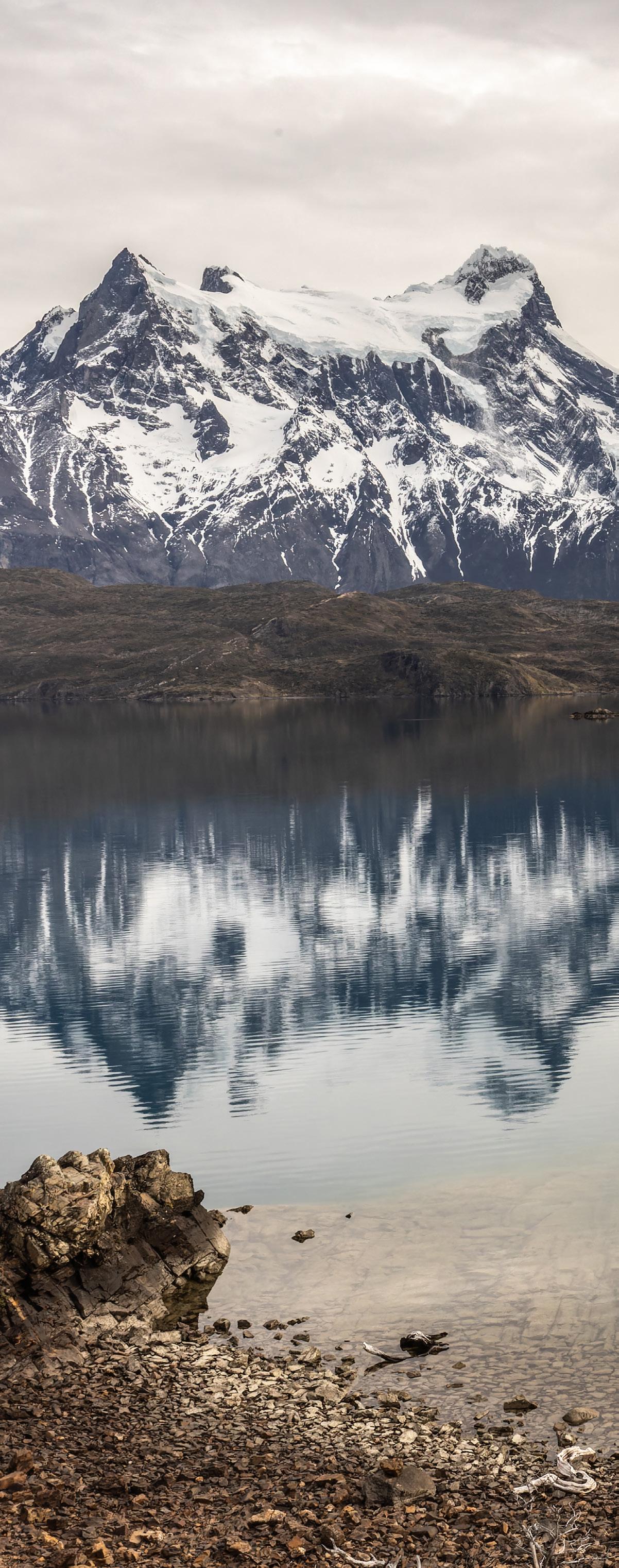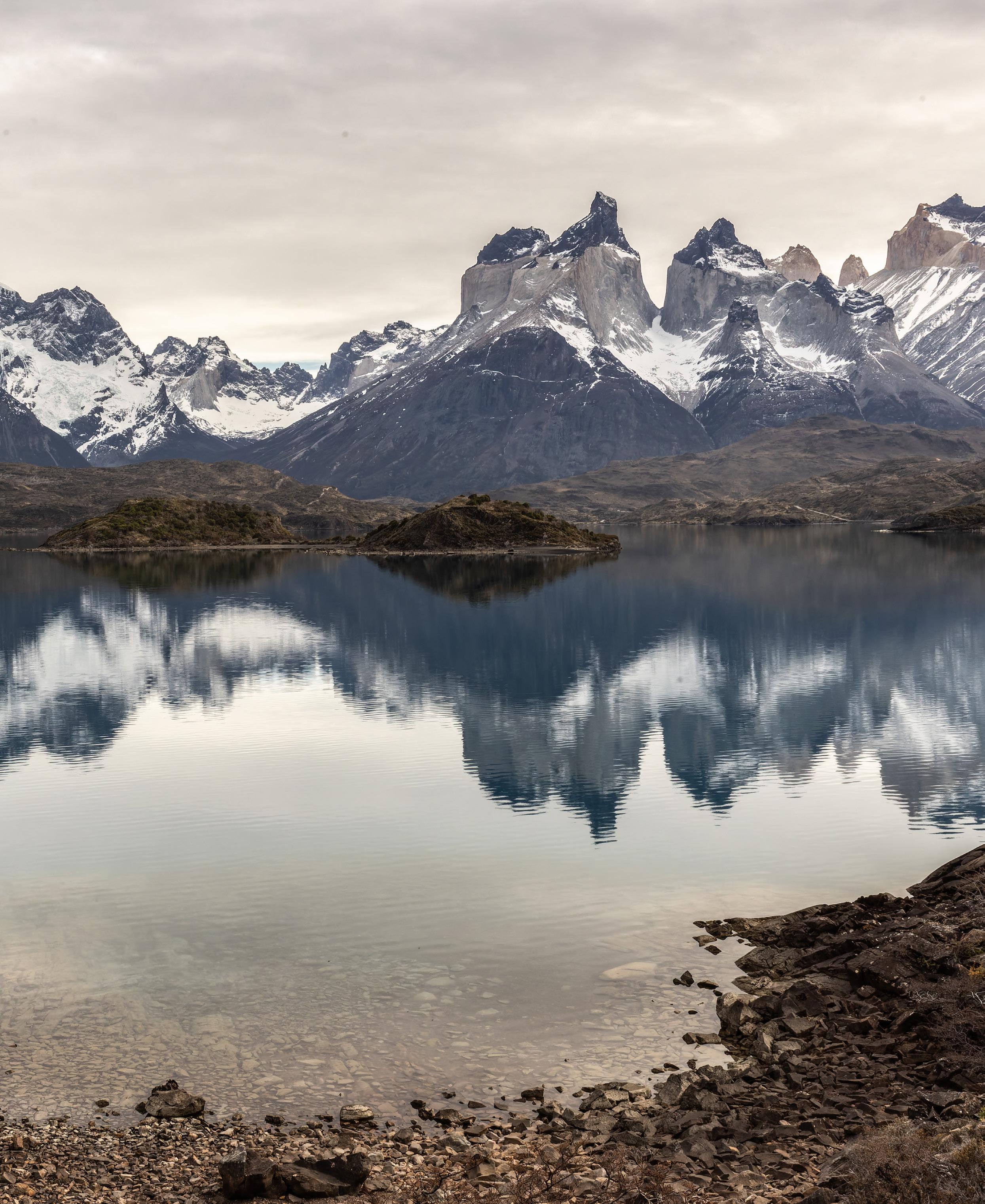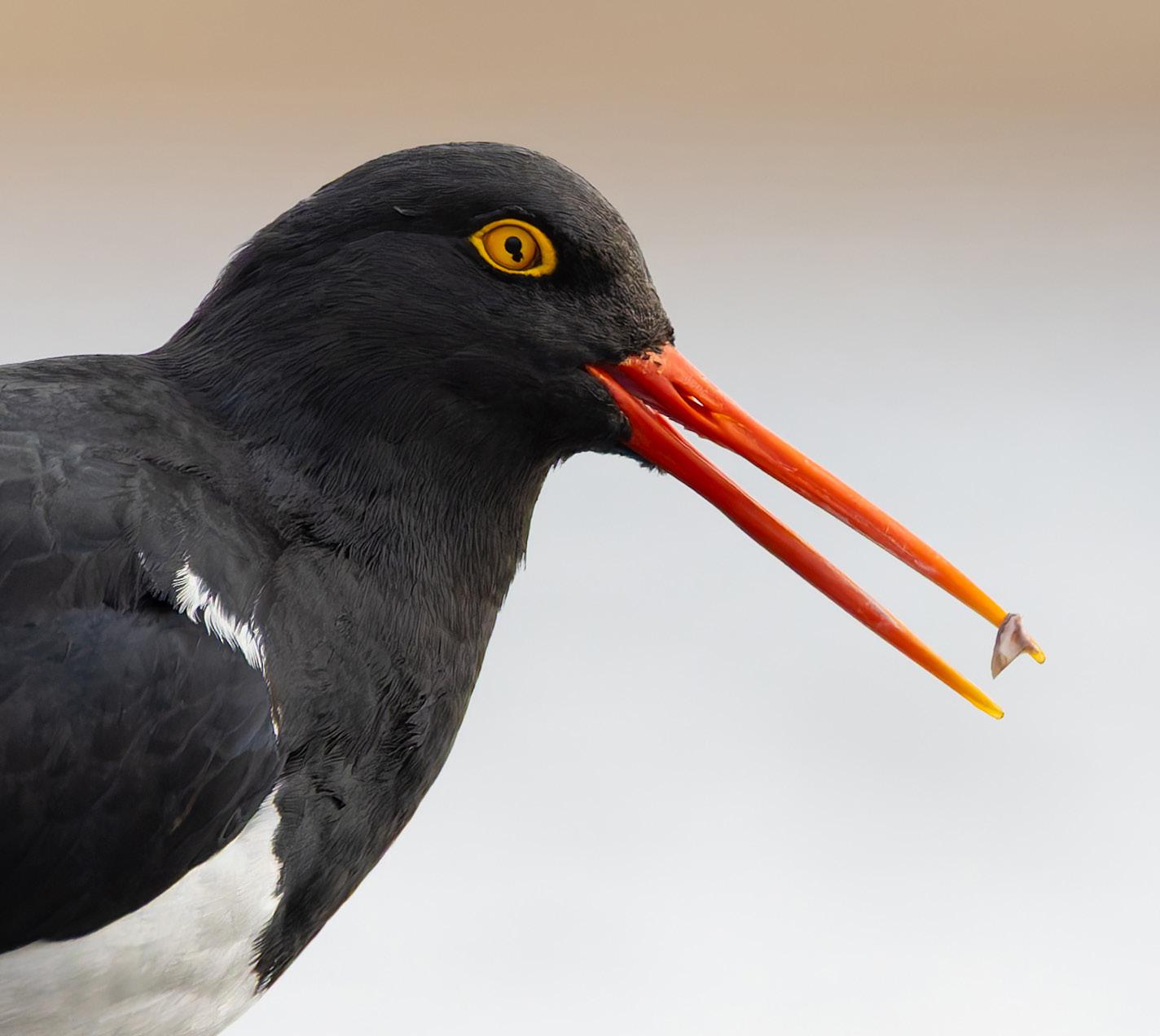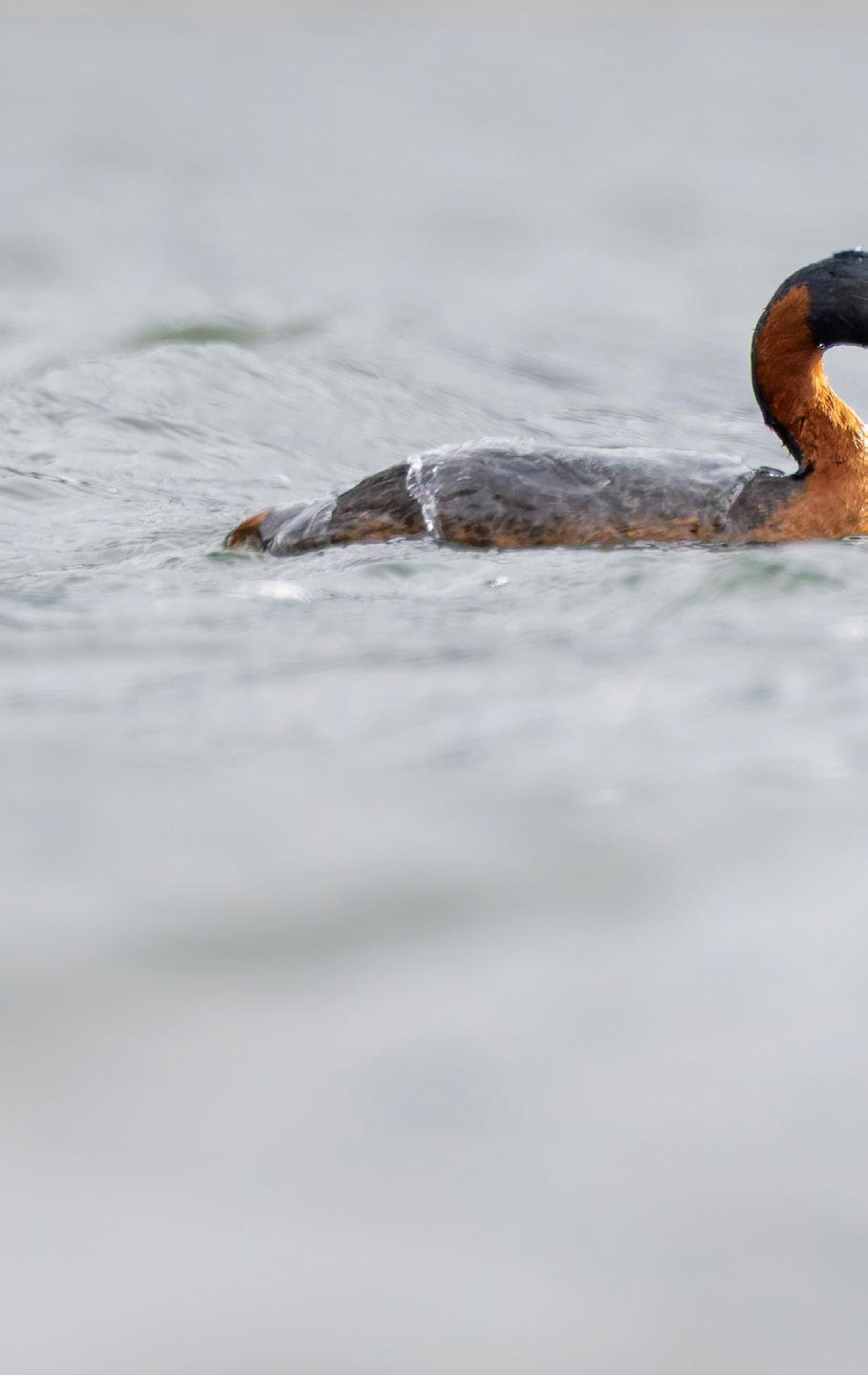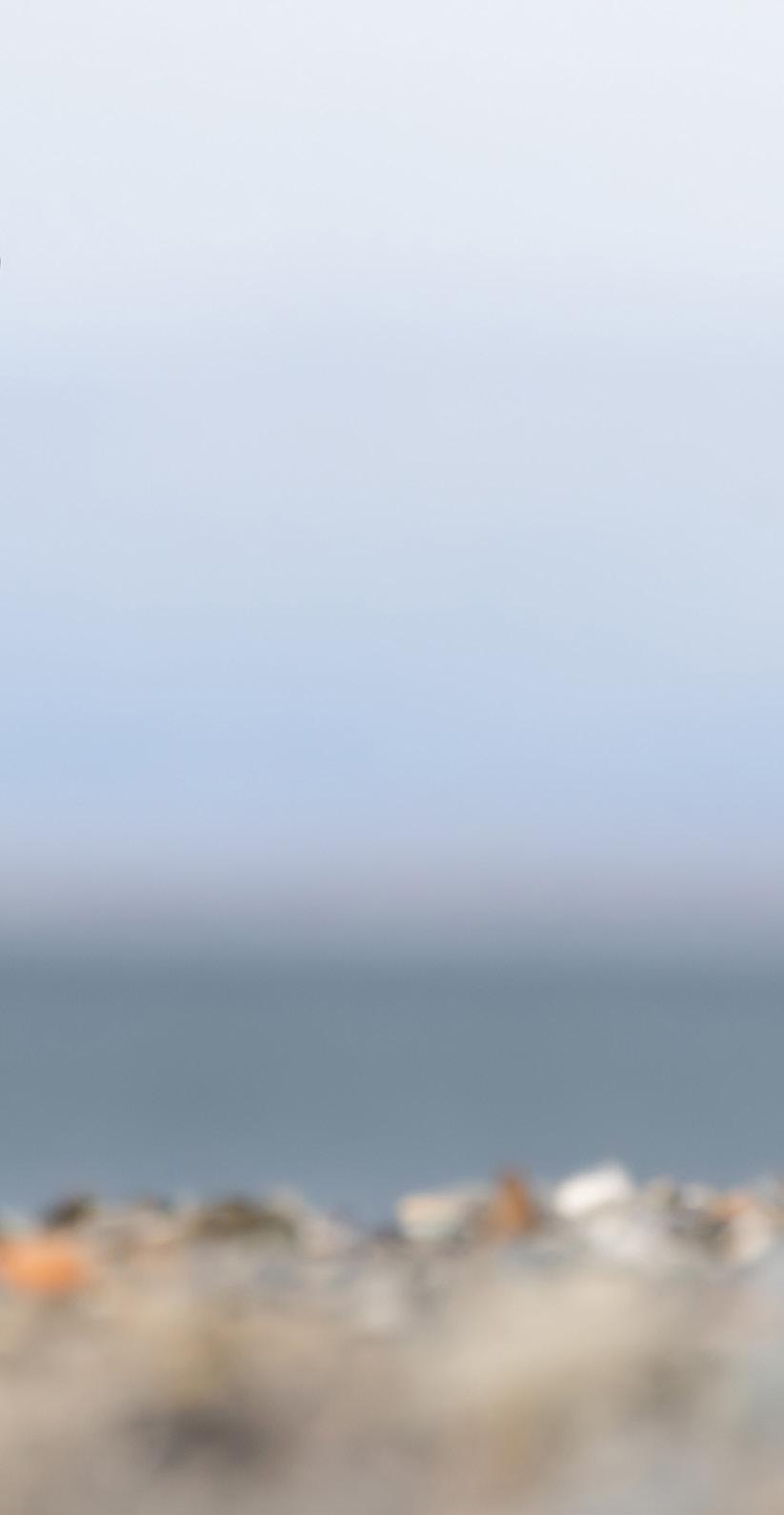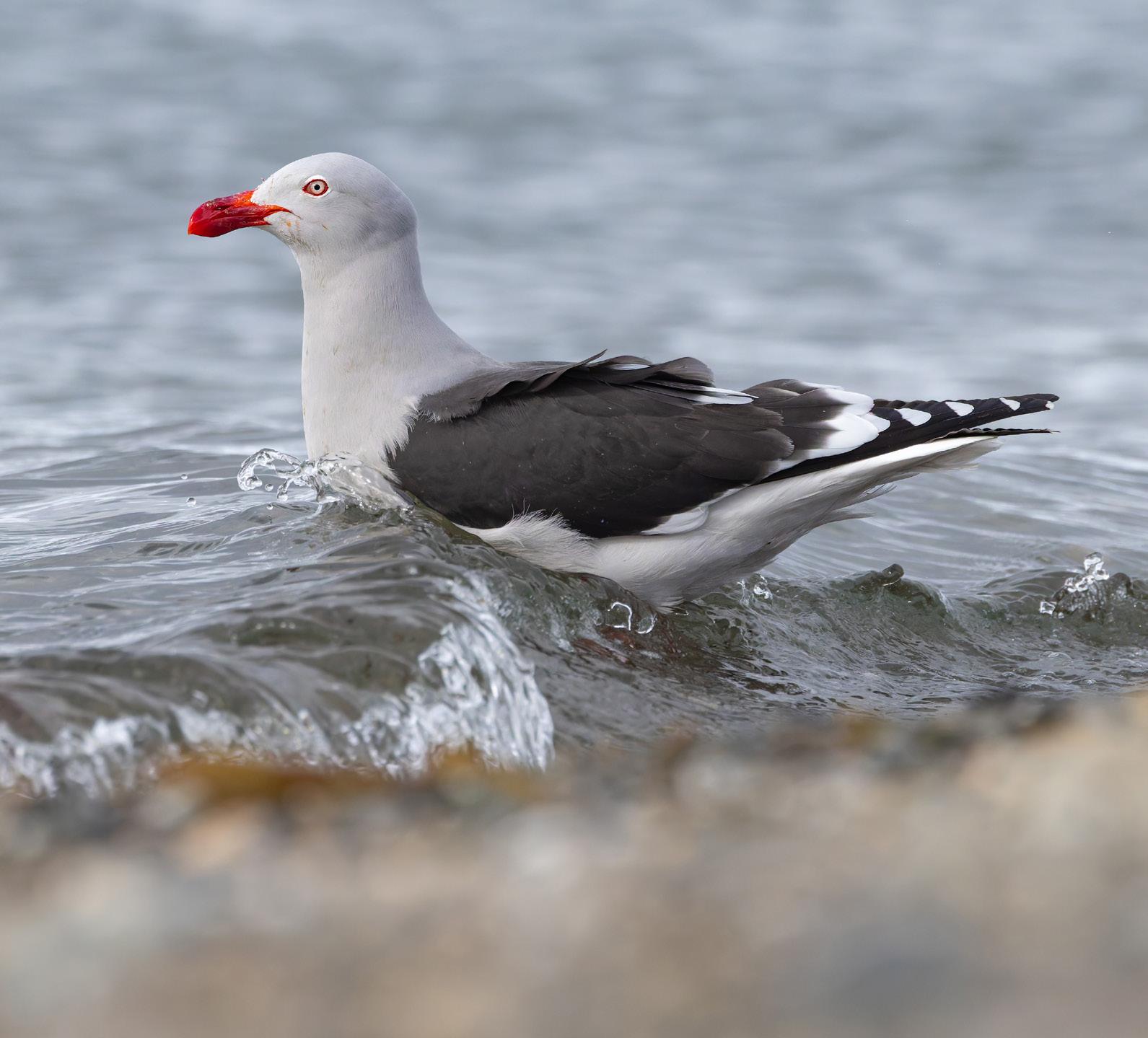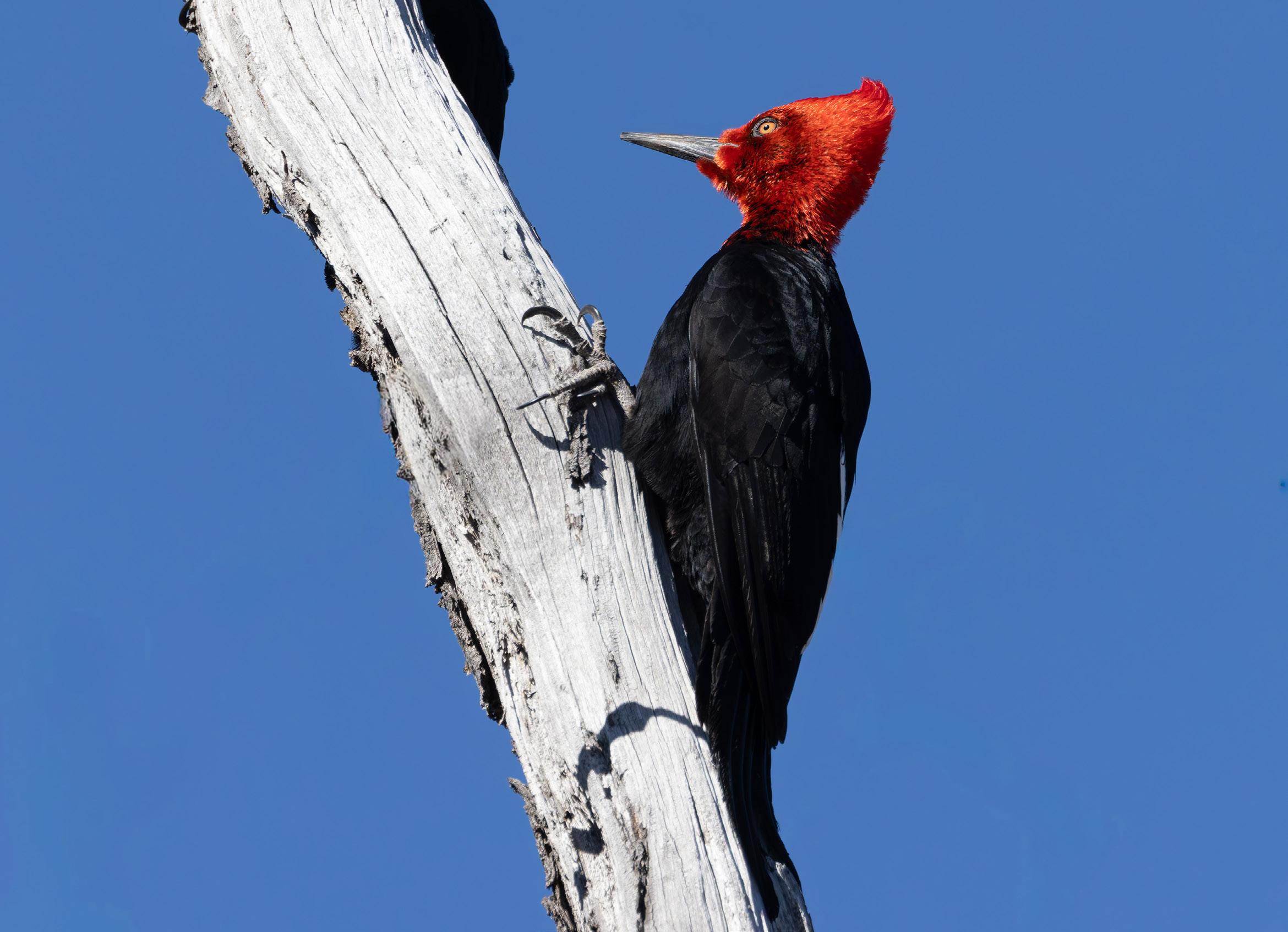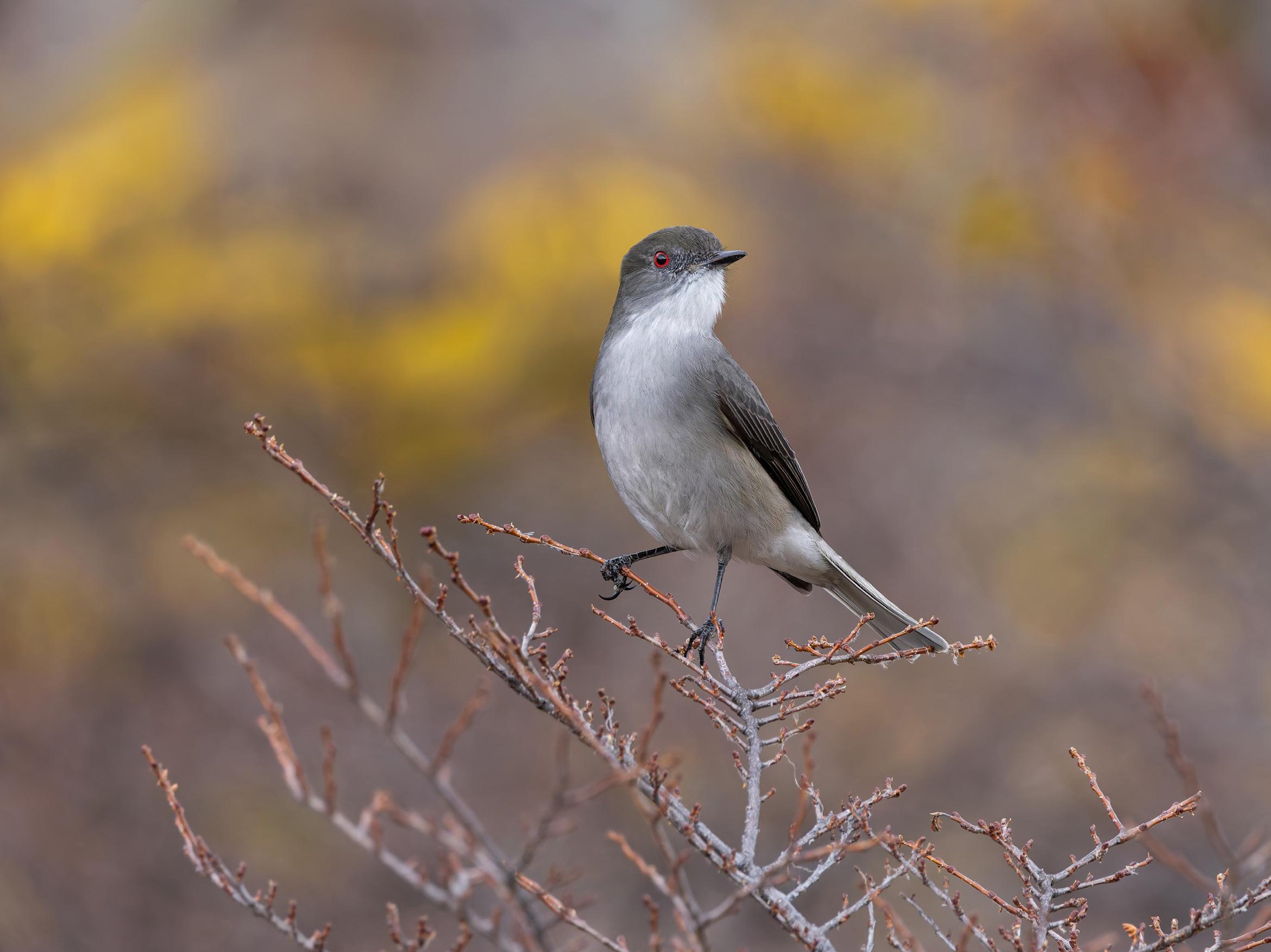CHILE: WALKING WITH PUMAS
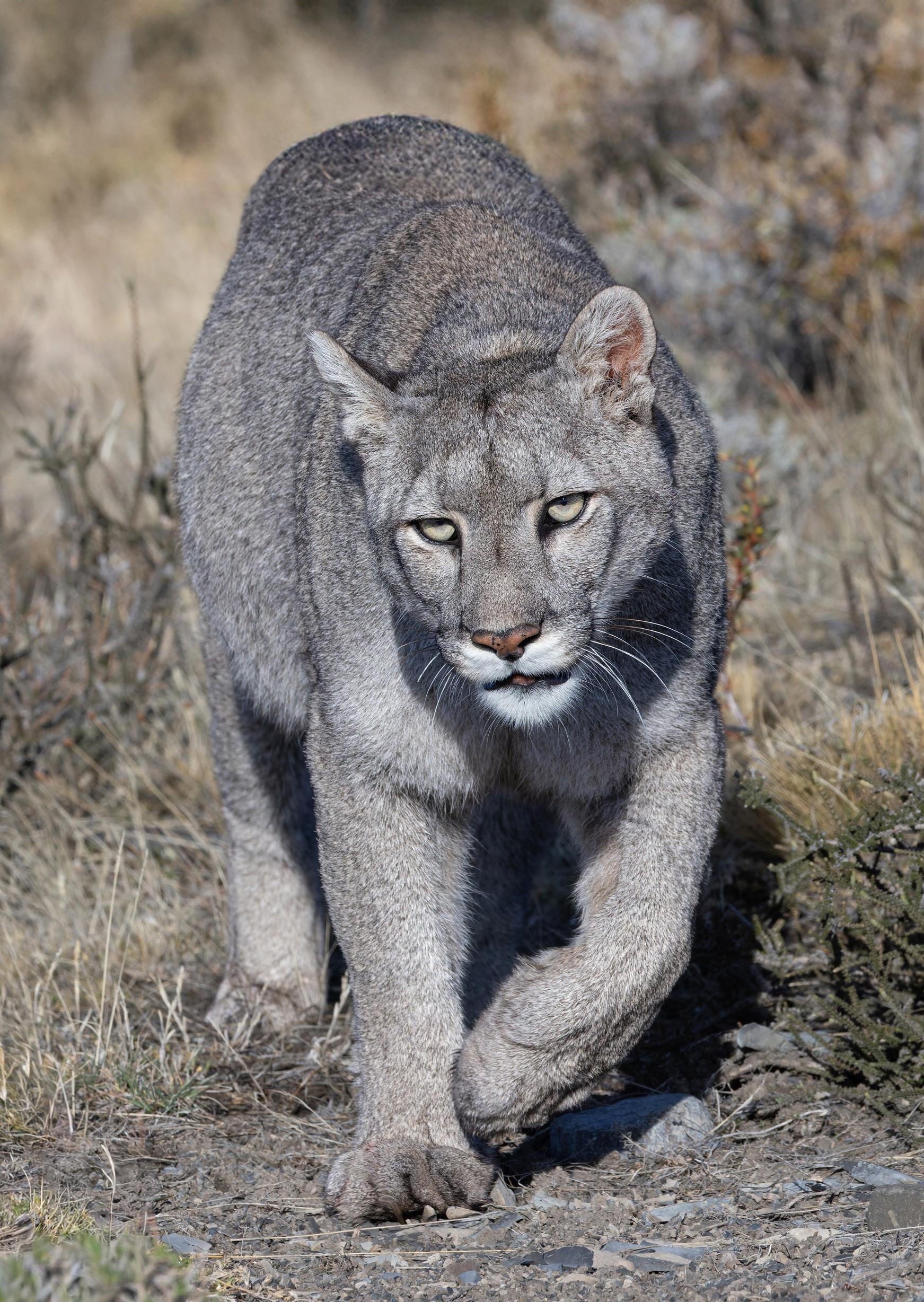
10– 21 September 2025
My 2025 Wild Images Chile: Walking With Pumas tour went very smoothly again and scored 15 Puma sightings in only 8 days in the Torres del Paine area. This was down on last year’s total, but that was boosted by a family sighting of five Pumas then three lots of three! What we lacked in numbers this time we replaced with duration of encounters and particularly that we walked much further with them with the cats, living up to the tour title!
A minimum of 11 different Pumas included some well-known individuals and internationally famous TV celebrities. In fact, some of the girls are old friends from previous Wild Images tours. It was wonderful to see how Escarcha and Danya have grown into big powerful cougars! The number of sightings afforded numerous photographic opportunities, and we were able to shoot them in a very nice range of different scenarios: close portraits; in-the-landscape; at rest; walking; a mother with a cub; eating at three different Guanaco carcasses; co-operation between females; both with and against dramatic early morning light. Thankfully all our folks this time were capable of all the Puma walking, and we had three great hikes alongside these incredible animals, a window into their world.
Although the tour was focused primarily on Pumas and we planned our time in the field with the possibility of cat encounters in mind all the time, there were inevitably other great wildlife experiences to be had in Patagonia. Other highlights this time included: the weird little Magellanic Plover, the iconic bird of the Southern Cone, so strange it is even placed in its own bird family; a pair of Lesser (or Magellanic) Horned Owls in a remote canyon; Black-necked Swans along the rocky shore at Puerto Natales; spectacular Andean Condors in Torres del Paine National Park; Austral Pygmy Owl, pound for pound the most fearsome predator of all in the Nothofagus forests; gorgeous Silvery Grebes on a mountain lake; the massive Magellanic Woodpecker, the largest extant woodpecker of the Americas and the noisy Austral Parakeets that greeted us after lunch at Lago Grey.
The Torres del Paine, one of the most iconic mountain ranges in the world, provided a backdrop to our adventures in Patagonia and while we missed out on some hoped-for snow (it is getting a little late by mid-September) we did enjoy some lovely spring weather on the fabulous Laguna Amarga Estancia (= ranch) and were only mildly disrupted by rain on a


couple of occasions. The ferocious wind for which Patagonia is infamous was almost completely lacking this time. Add to this some nice accommodation (particularly in Punta Arenas!), mountains of tasty food and delightfully friendly hosts and we had all the ingredients for a classic tour.
As usual I had a little time before the tour, which I spent checking out the Lesser (or Magellanic, I prefer Magellanic!) Horned Owls in the Cueva de Leona for the tour and then exploring the whole of the rocky, eastern side of Laguna Los Palos. This was the highlight of my time in Chile, to be alone on the windswept lake shore with nothing for company except shorebirds was wonderful. Although I had time to watch Magellanic Plovers here alongside Rufous-chested Dotterels and Two-banded Plovers as well as newly arrived migrant Baird’s Sandpipers, I was searching for something else. After 13,000 steps I was just about
to resign myself to having to wait until November in Tierra del Fuego when a shorebird flew up about 10 metres in front of me, giving a piping call. It landed not far ahead and I could see it had a white belly and ‘chainmail-patterned wing coverts. WHITE-BELLIED SEEDSNIPE! Wow! That was an exciting moment. I could follow it for a while, but it was quite shy, it was not present the following day, although I did not search anything like as thoroughly again..
Mike Watson, Clitheroe September 2025
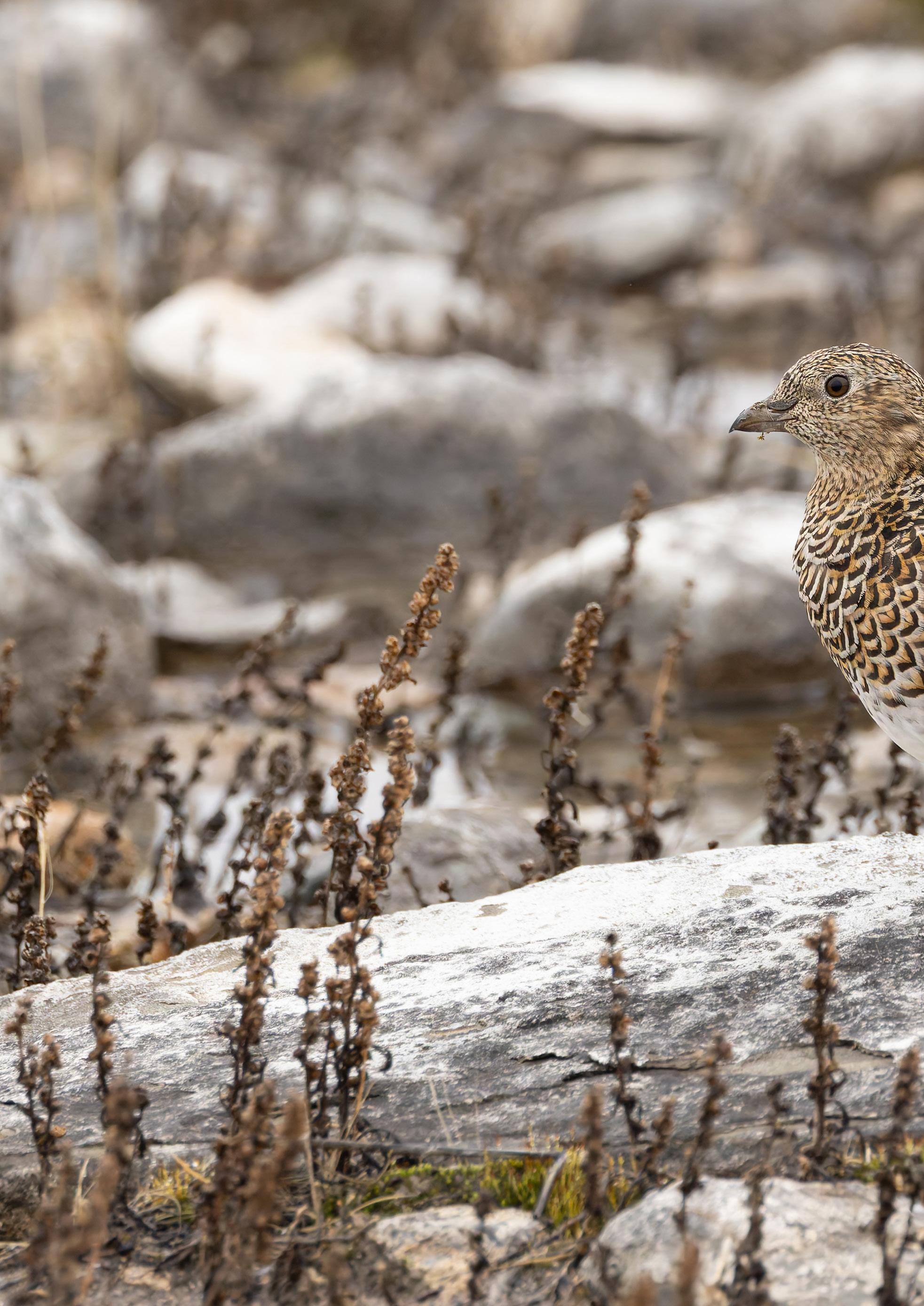
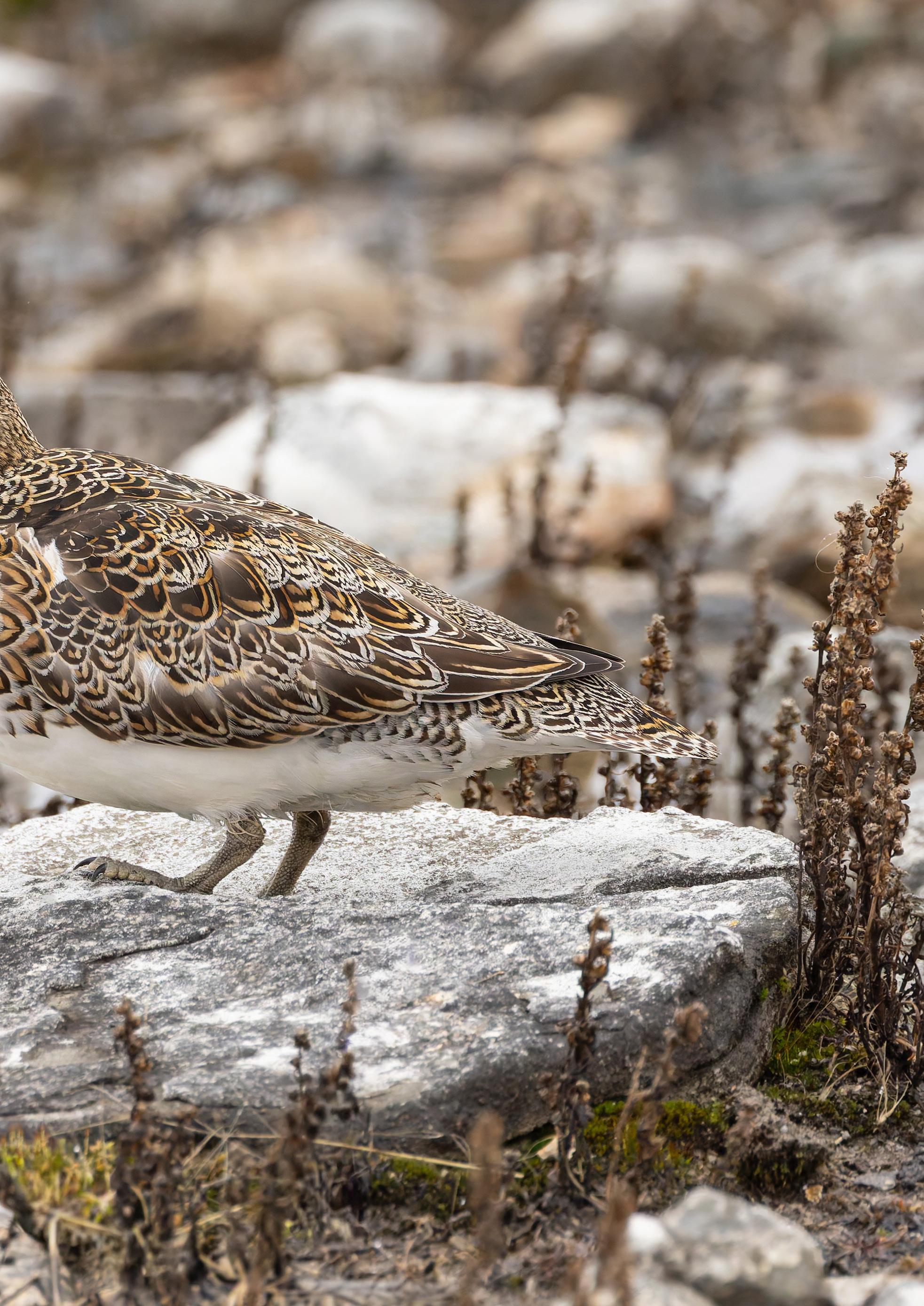
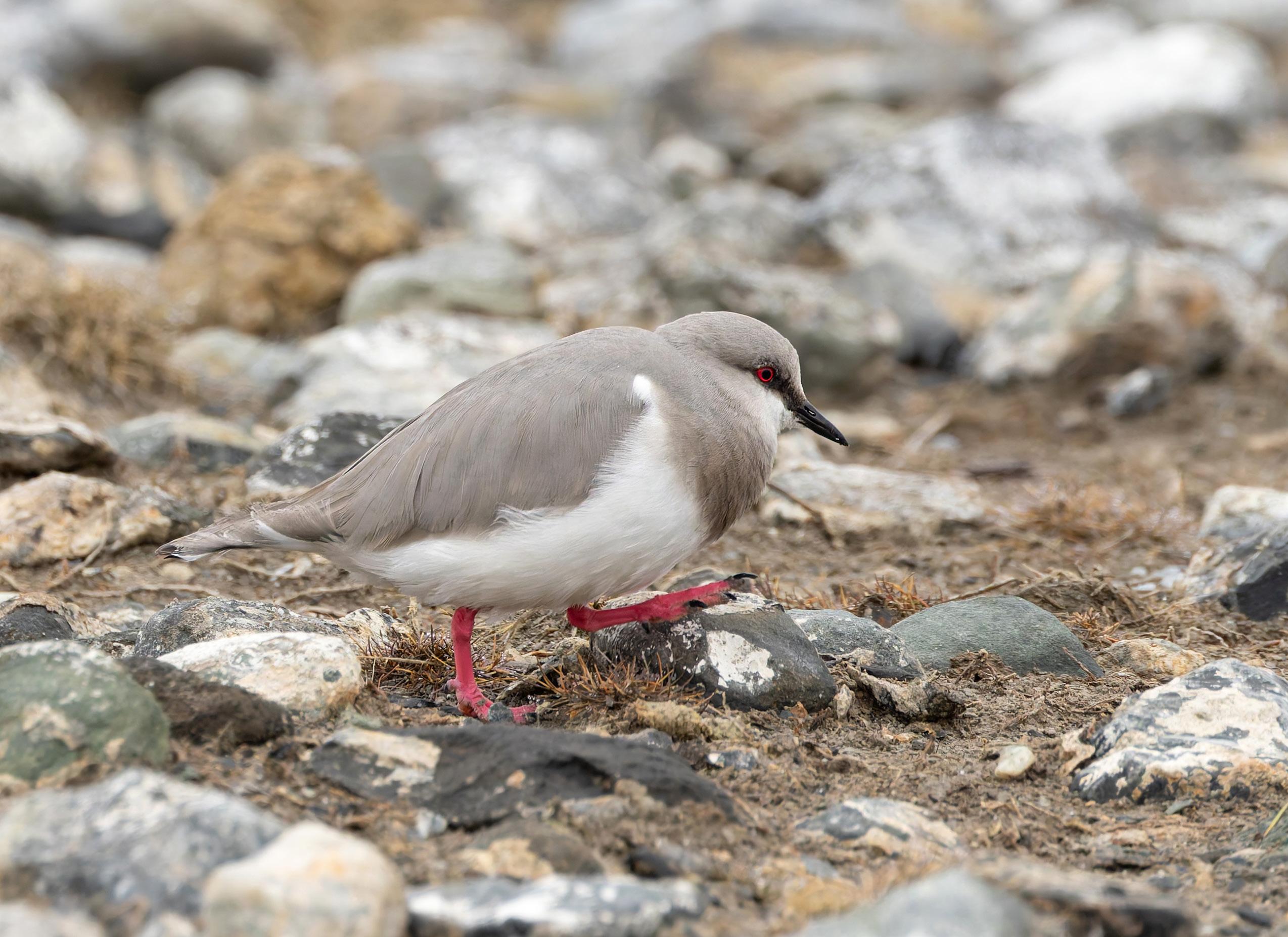

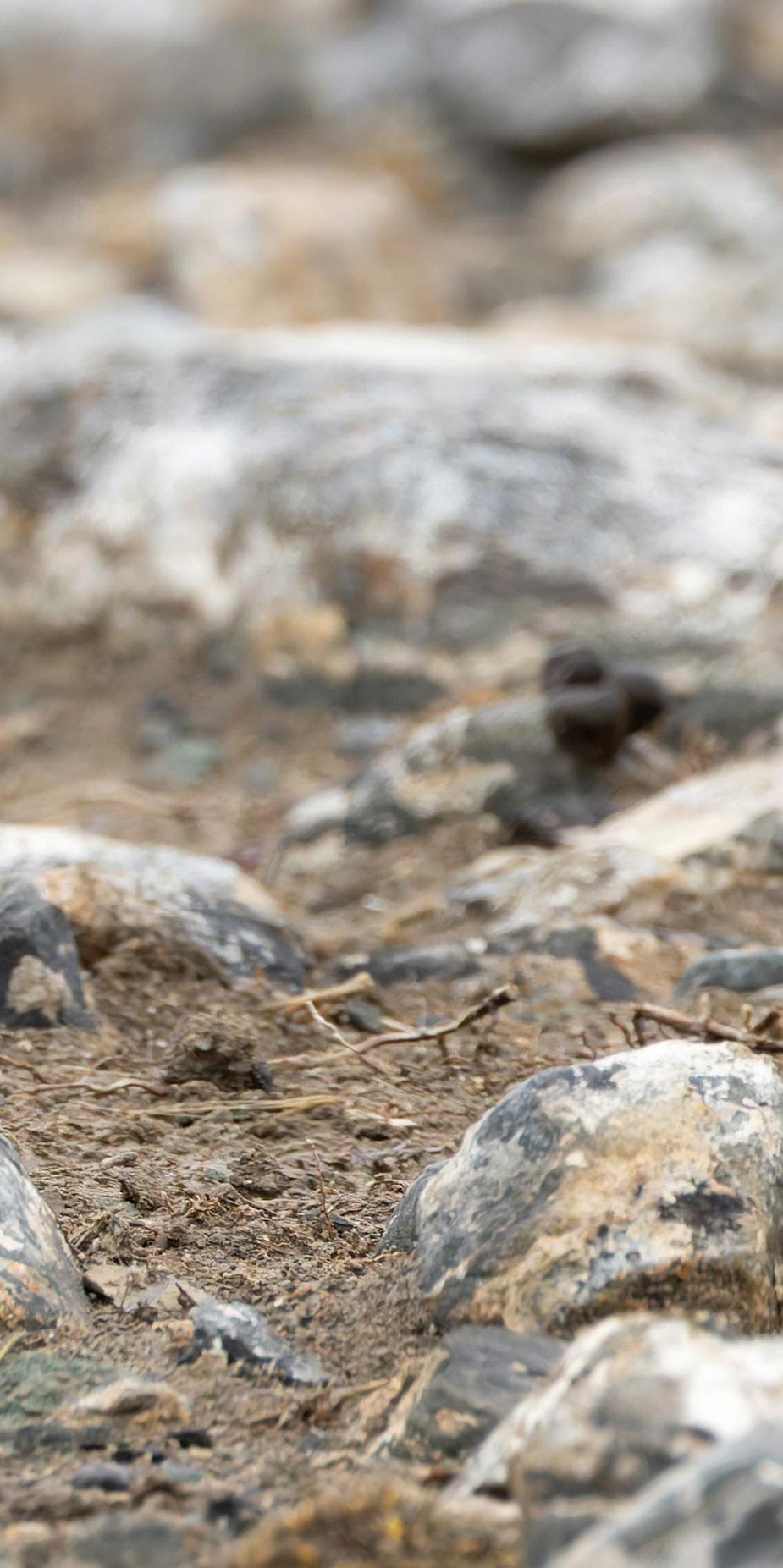
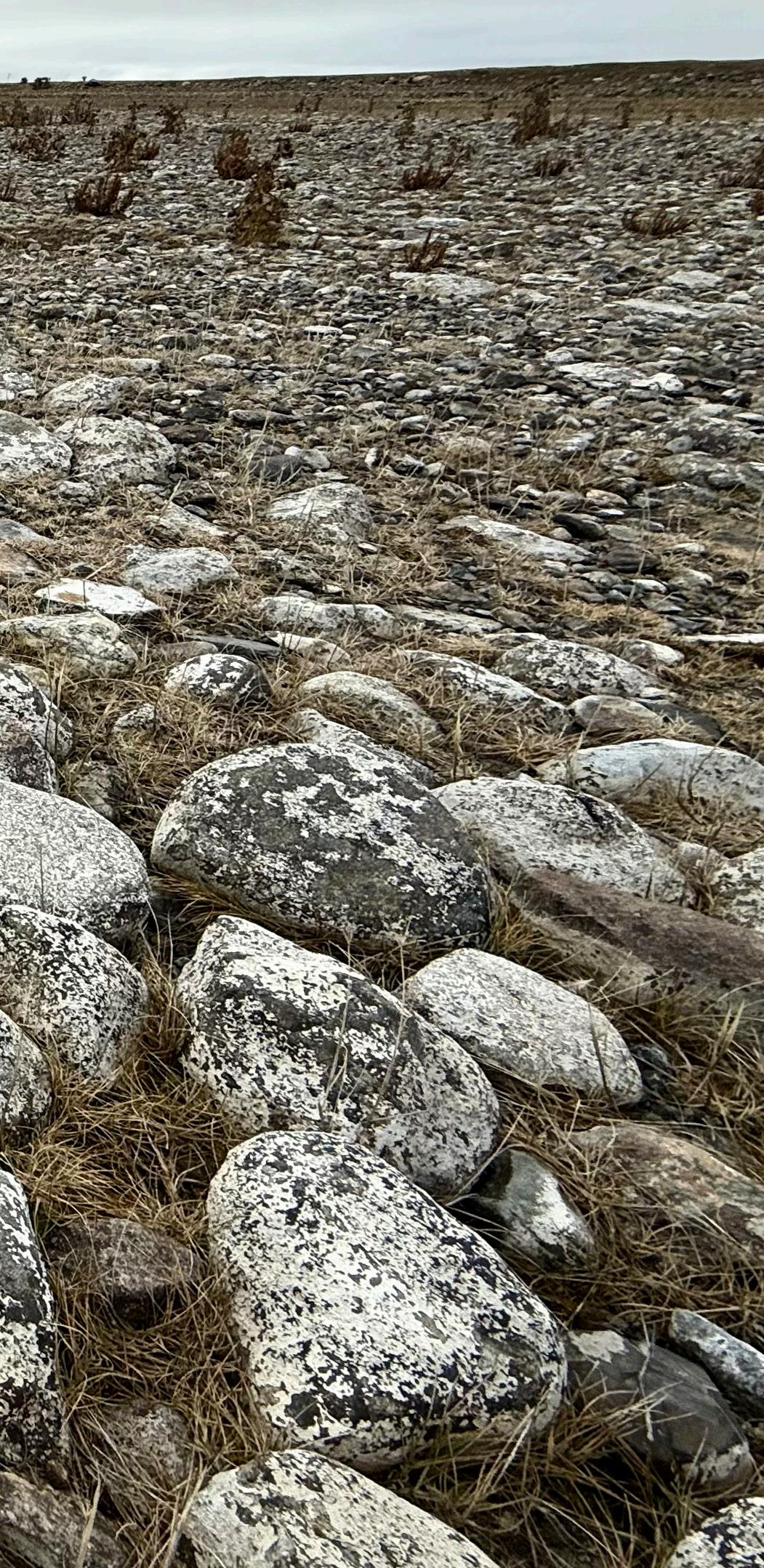
THE TOUR BEGINS IN PUNTA ARENAS
Some background to the setting for our tour start. Punta Arenas (‘Sandy Point’) is a small city, with a population of 145,000 but is of great importance strategically, being the capital of Chile’s southernmost region Magallanes (and Antarctica, for which it serves as a gateway). It is not connected to the rest of Chile by road (one must fly, take a ferry or drive through Argentina to get there). This wild region ‘at the end of the world’ was mostly settled by European immigrants from Russia and particularly Croatia in the late 1800s and it is unusual in having its own time zone (UTC -3), using summertime all year round! Its inhabitants must endure strong winds (ropes have even been deployed between buildings downtown!) and harmful UV light owing to the thinning ozone layer. However, being in the rain shadow of the Andes, the precipitation is quite low. The city’s early economic boom days were curtailed thanks to the Panama Canal but more recently it has become a centre for gas and oil and latterly a tourism hub for both Antarctica and access to Torres del Paine. Some of us enjoyed its wide boulevards in the period leading up to the start of the tour, full of interesting shops, bars and restaurants. The weather was kind to us as we set out on our exploratory day from Punta Arenas, unlike last time! We began with a leisurely walk around the windswept rocky shore of Laguna Los Palos to the north of the city and very much out on the Patagonian Steppe. The Magellanic Plovers from the previous day’s recce delighted, especially in the shallow pools among the rocks above the water’s edge. Magellanic Plover is a unique shorebird, so weird it is the sole member of its own bird family. It even regurgitates food for its young! It has a dumpy body a bit like a plover but a bill that would not look out-of-place on a warbler. Unfortunately, the White-bellied Seedsnipe from the previous day could not be found but there is an endless amount of wild rocky habitat for it to hide in. Luckily none of our folks this time were bothered, we had mostly cat people this year. Other smart shorebirds on show within reach of the cameras this morning included Rufous-chested Dotterels and Two-banded Plovers as well
Magellanic Plover & Laguna Los Palos landscape. Previous page: White-bellied Seedsnipe (Mike Watson)
as Least Seedsnipe and Baird’s Sandpipers. While enthusiasm for birds in this year’s group was mostly lacking, everyone loves an owl right? We could hardly have hoped for a more co-operative pair of Lesser (or Magellanic) Horned Owls in a remote water-sculpted canyon not far from Laguna Los Palos. They simply sat tight while our folks worked angles for the best background and composition. They were totally calm. Fab-u-lous! This short session was so efficient it rather saved the day. After the slightly underwhelming shorebird photography we still had the condor roost to come, as a grand finale. The only problem was that when we got to the famous condor cliffs at Olga Teresa Estancia there were only three birds stood on the high ledges, at the far end of the escarpment and although we waited, and waited in our lofty perch atop the weather-beaten cliffs, no more appeared by the time the evening light faded and it was time to leave. The grand finale went missing. Even our local guide was not sure what happened here, maybe they went on a feeding sortie after days of bad weather, found something
large and stayed there for the night? We will watch future sightings with interest, but their non-appearance was not in the script. I need not have worried, as we would have some nice condor encounters later in the tour but at the time it was quite deflating. Some very nice condor feathers for the bookcase were compensation; there had been plenty of condors around recently! Some of us did manage a handful of flight shots while up on the cliff top, of Black-necked Ibises and Black-chested Buzzard-Eagle, as well as the ubiquitous Rufous-collared Sparrow, and on the drive back to Punta Arenas a Short-eared Owl of the dark local form obliged on a lichen-covered fence post.
ROAD TO THE END OF THE WORLD
This morning, we headed north out of Punta Arenas on the famous Ruta CH-9, bound for Torres del Paine. After a very dry winter, the water in roadside lagoons was quite low, resulting in fewer Chilean Flamingos. The light was rather dull today, so we pressed on to Puerto Natales. This is a great spot for the
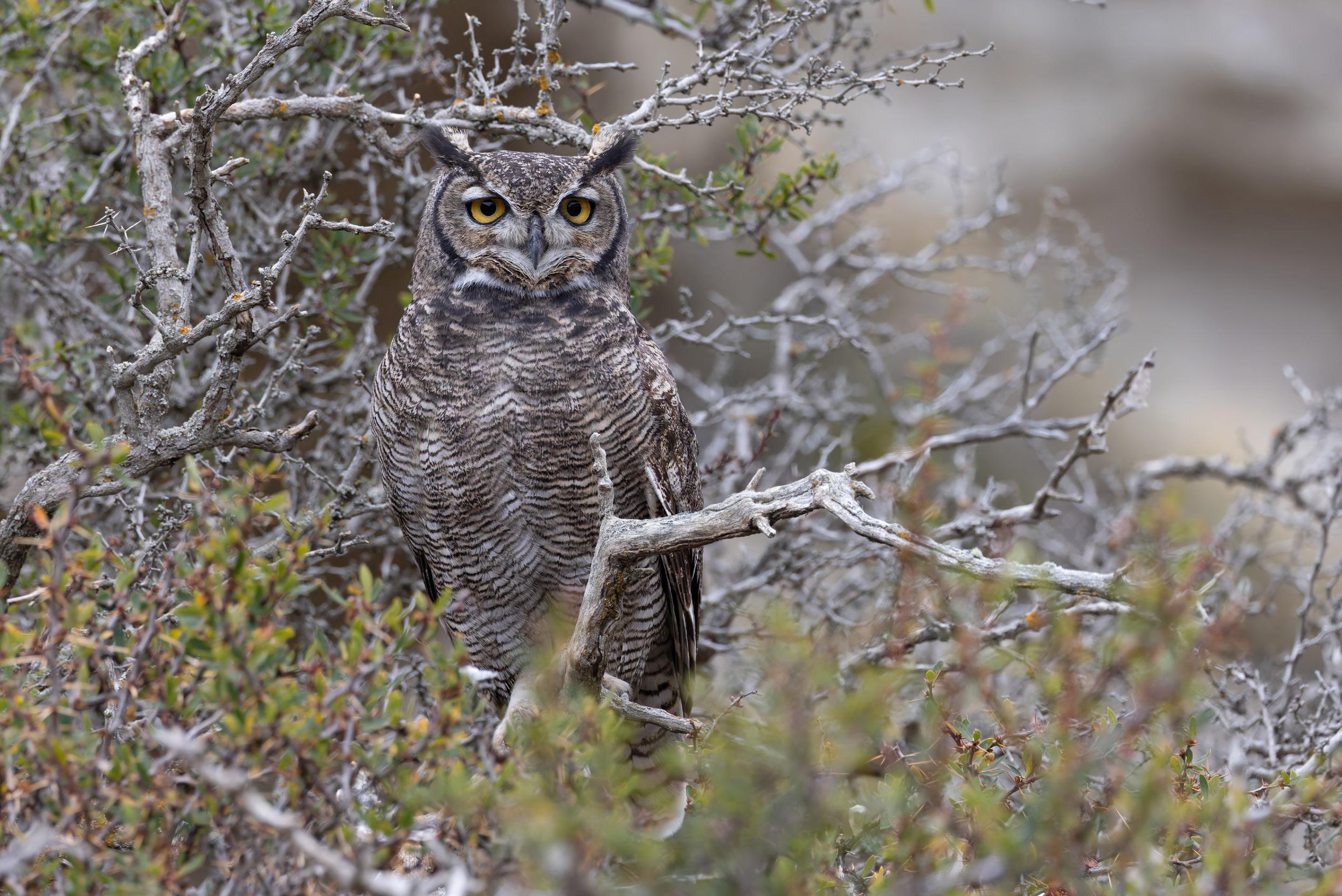
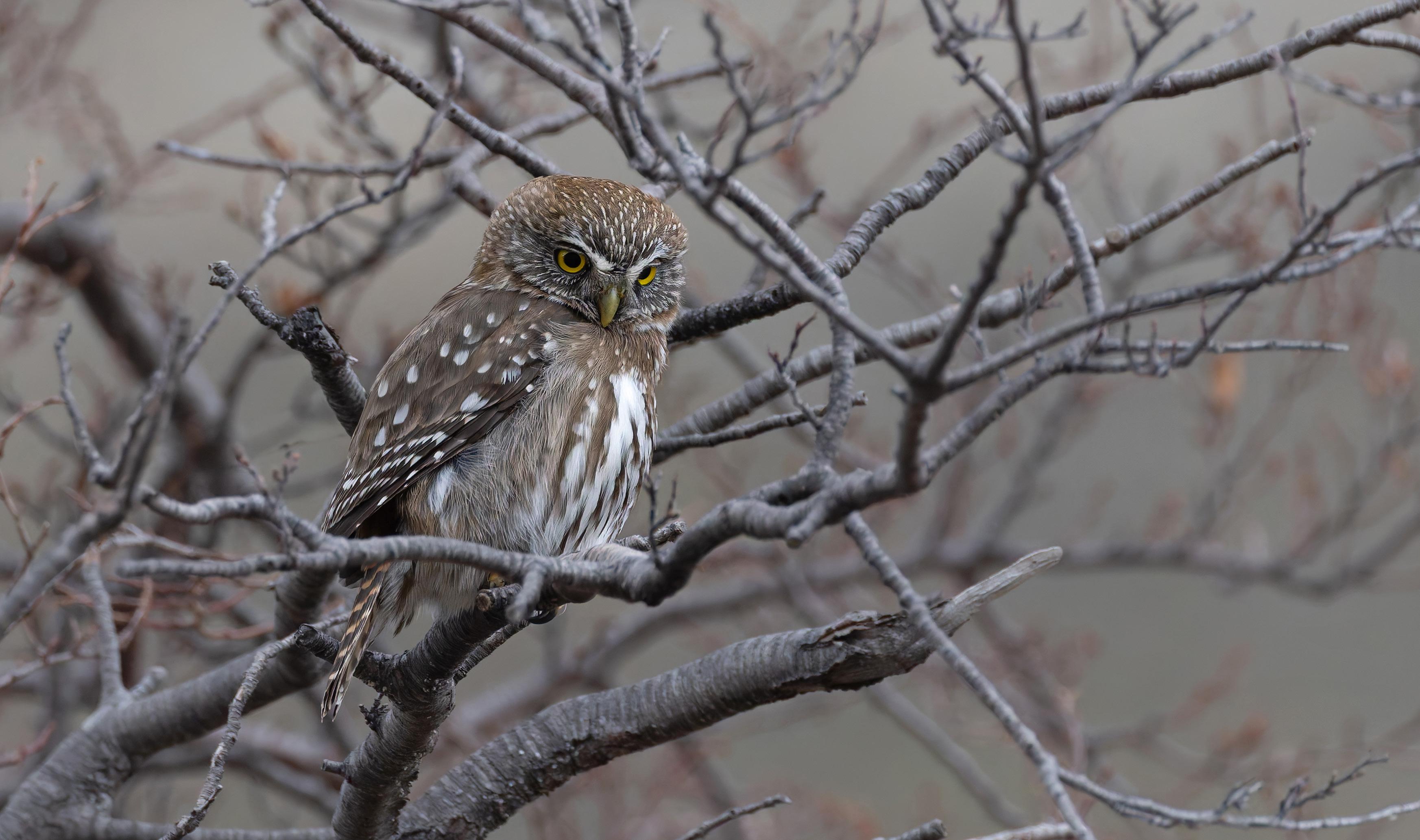
stately Black-necked Swan! We enjoyed a great photo session before lunch with up to 11 of these beauties by the life-size Milodon statue. Later in the tour we passed the Cueva del Milodón Natural Monument, which is a cave, to the north of Puerto Natales. It was inhabited by prehistoric tribes and was the site of the discovery in 1895 of the remains of a 3-4m long Giant Ground Sloth (Mylodon darwini)! Meantime the swans afforded some great low angle shooting from the water’s edge, with some interaction between several pairs. There were also some very approachable Brown-hooded Gulls, some with a pinkish flush, and Magellanic Oystercatchers for the cameras. Puerto Natales was also the location of one of our favourite meals of the tour at a fabulous little restaurant, Goose. Continuing away from the end of the world we pushed on north towards Torres del Paine, passing Lago Figueroa. It was here in the mistletoe-clad beech trees that we had a great encounter with Austral Pygmy Owl, the pint-sized demon of the Patagonian forests, hated by the small birds on which it preys. Thorn-tailed Rayaditos followed it around and the commotion also attracted some
smart Fire-eyed Diucons (members of the tyrant flycatcher family), which posed nicely with yellow mistletoe backgrounds. On the lake itself a few Flying Steamer Ducks paddled by, but we were really after the super-sleek Great Grebes, which swam closer in the choppy waters to check us out. We reached our hotel in the delightful small hamlet of Cerro Castillo on a sunny evening in time for an orientation meeting, which included the dos and don’ts (of which there are many!) for our Puma tracking over the coming days. Cerro Castillo was established by Croatian immigrants who maintain a strong cultural identity to this day.
Tucked in a faraway corner of Chile, at 51 degrees South, is the famous Torres del Paine National Park. The national park encompasses 700 square miles of mountains, glaciers and lakes and the Paine Massif itself includes the famous Towers, three towering granite peaks reaching 2500m ASL, as well as the only slightly less impressive Cuernos del Paine (Horns of Paine) on its southwest flank. Thanks to a quarter of a million visitors every year it now has some very strict rules, like you are not allowed to leave the roads through the
park except on marked trails and you are absolutely not allowed to leave trails, even by five metres! This combined with a never-ending procession of other vehicles means that Puma watching inside the park can be very unsatisfactory, as a gaggle of noisy tourists quickly piles up whenever you stop anywhere, even if you are not watching anything. So, there really is no substitute for the wilds of the Laguna Amarga Estancia! There is nowhere else in the world that you can do what we do there! This is owing to off-trail access, more relaxed rules about the distance at which we are allowed to watch a Puma from and the fact that several of the Pumas here are habituated, having lived their whole lives in the proximity of Puma watchers. All of this opens the door to (sometimes stunningly) close encounters with relaxed Pumas. I must pinch myself that they are considered a threat to humans in much of the rest of their range in the Americas, as a Puma wanders past me as if I were invisible! The sheep ranch we search in is outside the national park, although it is adjacent to it, has much the same habitat as the park and
the animals of the park come and go as they please. The main advantage being that park rules do not apply here. The ranch does not have many sheep, and it is mostly left to the Guanacos, which in turn attract the big cats. The estancia is a rolling land of eroded hills and wild Patagonian steppe, heavily glaciated, evidenced by the conglomerate errratics dumped by glaciers here and there across the bleak grassland.
INSTANT DOUBLE
Puma Nos. #1-2. BOOM! Within a few minutes of entering the estancia on our first day of Puma tracking the radio crackled into life with Jorge just saying the word ‘contacto’. Our ‘recon’ Puma tracker Jorge Cardenas had scored immediately, and was watching a friend of ours, Escarcha, walking away from a kill. She was on the move, and the plan was to intercept her on her way downslope towards Lake Sarmiento. Our pace quickened, whizzing around the winding, rutted jeep tracks that led to her. Piling out of our vehicles in a state of mild panic, there she was. Our first Puma. The sun had


just risen on a clear morning, and the grassland was still bathed in a golden glow, turning her distinctive grey coat after which she is named, ‘Frost’ in Spanish, a much warmer tone. I saw her a year ago not far away from where we stood today but she now looked a much stronger and more powerful cat, a fitting heiress to the Petaka dynasty. Her mother Petaka is probably the most famous Puma, a star of TV documentaries filmed on the Laguna Amarga ranch. Escarcha is also thought to be the daughter of Dark, the erstwhile alpha male of the estancia, now gone AWOL to the south side of the lake, wearing a tracking collar. Equipment was hastily gathered and we were off on our first walk with a Puma. The thing about these walks is that you never know where or what they might lead to, they could last a few minutes (if the Puma just lays down) or they could go on for hours depending on where she goes and what she does. However, we knew she was leaving a kill, and therefore she would not be hunting, so the former was more likely. Either way it was tremendously exciting to have her in our viewfinders in the
Matriarch Puma Rupestre (Mike Watson)
golden hour. When she walked, we walked and when she stopped, we stopped. The challenge is always to anticipate where to position ourselves for a head-on image, maybe with a nice background too. She obliged several times before reaching the road along the lake shore and entering the lakeside Mata Negra (‘Black Bush’), where we left her. What a terrific start!
That was just the start, no sooner had we had finished walking with Escarcha, our ‘overwatch’ Jorge directed us back uphill, to Rupestre, the matriarch of her own dynasty. She was resting by a large Calafate bush but soon started walking towards us. She paused to drink for a while from a small streamlet (cats need to drink a lot after a huge meat intake) before heading uphill. We were off again! This was a rather short walk though, back to her Guanaco carcass, presumably what Escarcha had been eating too? Rupestre has a warmer brown coat than Escarcha and is the mother of a couple of cats we saw last year, Ginger and Coirón. She is around eight years old and is showing some signs of wear. The kill was well

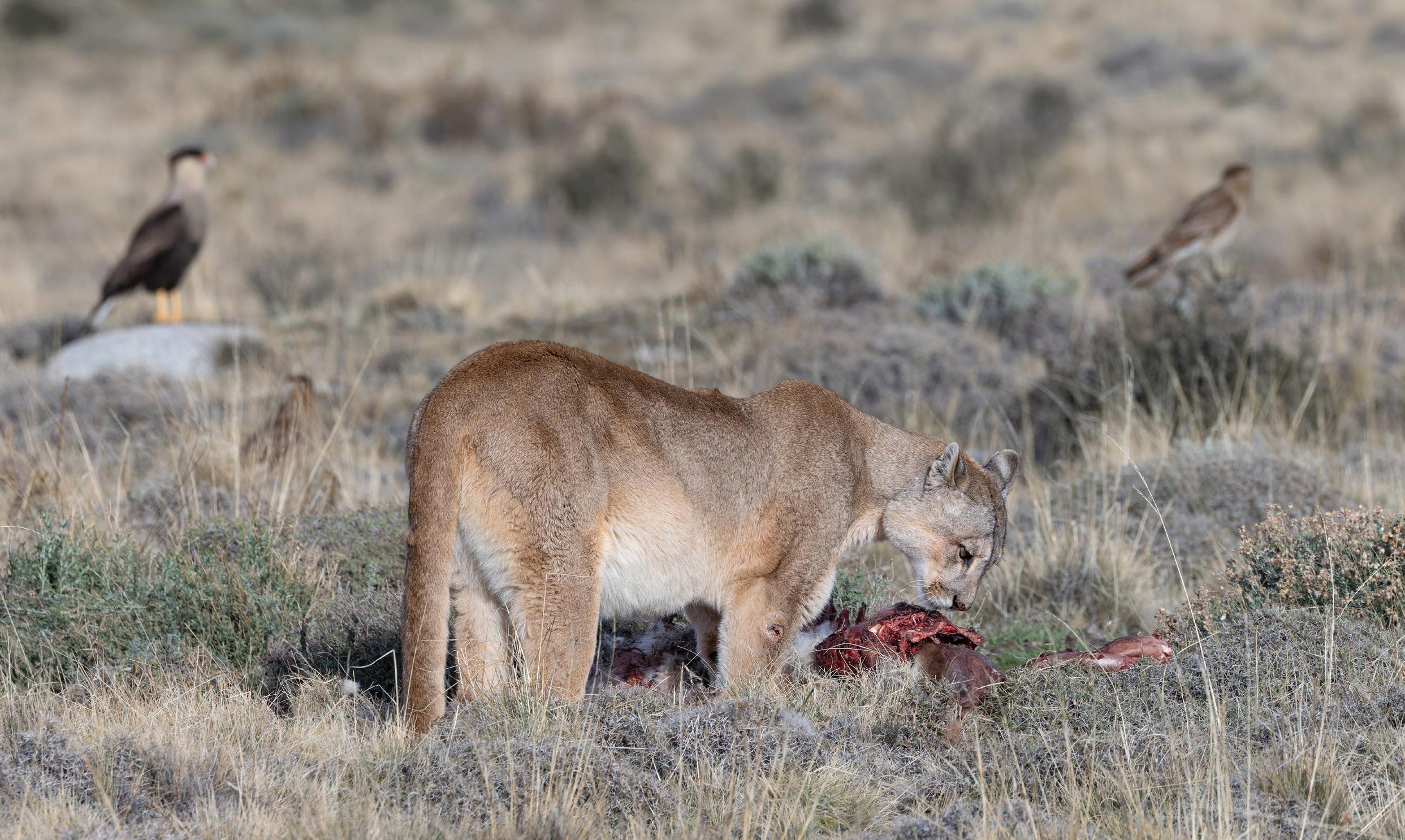
eaten, with all the flesh stripped from the skull for instance, so it presented a rather gruesome sight. Rupestre was still obviously hungry and crunched on the remains for a while. Another sign it was an old kill was the presence of Crested and Chimango Caracaras, hanging around for their turn once the cats had enough. We managed some good eating images and then a few in-the-landscape shots, including distant snowy ridges, before she walked out of sight. She didn’t even bother to cover the kill before she left, a sign that she had enough and wasn’t going to return to it. An intense introduction to walking with Pumas! We returned to Rupestre during our afternoon session, to find she was resting about 200m downhill, legs in the air and although we waited to see if she would do anything, the chances were against it and nothing happened. What a great start to our Puma tracking it had been though!
TWO SHY
Puma No. #2. Our second day started with some excitement when sharp-eyed Diana spotted a Puma from the second vehicle. Very
impressive and I think a first for this tour for a guest to find a Puma? However, it transpired to be a shy youngster, hiding in some large bushes, probably in wait for its mother? We decided not to disturb it, on hearing that there had been a Puma here the previous day, which had hidden all day. After more searching we reached the less productive middle section of the day and a flat tyre was a cue for some bird photography. We succeeded in some great images of Scale-throated Earthcreeper in the Mata Negra and once the wheel was changed, we could approach a family party of Andean Condors that took flight and circled past us beautifully, thoroughly making up for the disappointment of the Olga Teresa Ranch. After this excitement for the bird lovers, we made our way to Laguna Amarga, where, after a little effort, a small flock of distant Silvery Grebes eventually became a point-blank encounter with some lovely water level images. Light was not great for landscape images (normal for midday) but we made a touristic visit to the pretty Cascade del Paine, the most significant waterfall in the area. There was a pair of Tor-

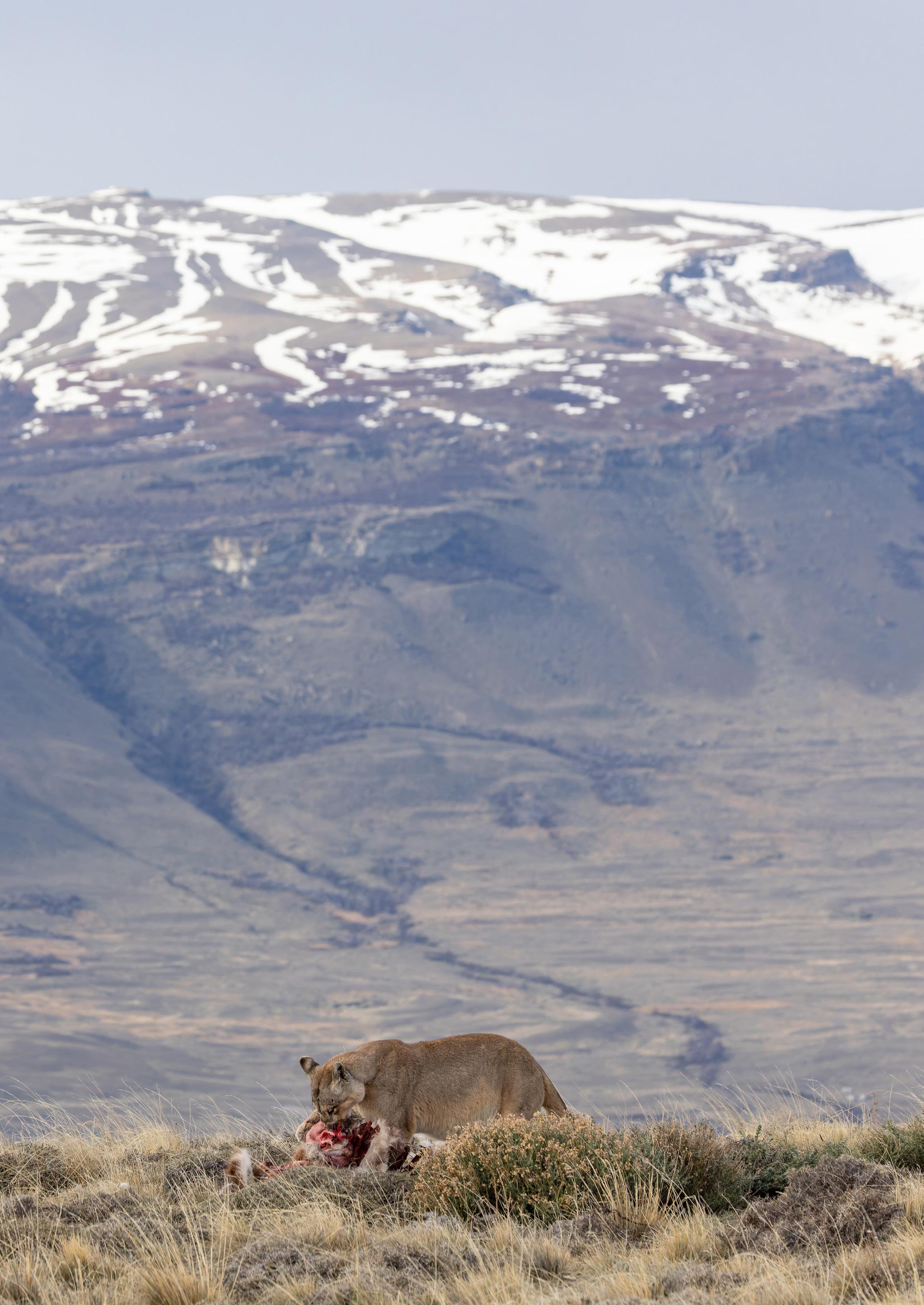




rent Ducks in the river above the falls, a few Long-tailed Meadowlarks around the car park as well as some ultra tame Rufous-collared Sparrows. We spent the afternoon searching in the less than productive northern section of the ranch, to which we had been allocated and eventually received a ‘contacto’ call from our ‘overwatch’ Jorge. There was a Puma No.#4 not far from the site of our flat tyre. We were there in no time but it proved to be a very shy cat that scarpered at about 200m range. Also today a shy South American Gray Fox had evaded a reasonable view, it was just one of those days. We shouldn’t complain though, any day with two Pumas sightings is a good one.
OVER THE FENCE
Filthy weather persisted for most of the day, with heavy rain at times, only clearing to sunshine late in the afternoon. A wind from the southwest usually brings this kind of weather. So, we were surprised to hear from Jorge that he had found a cat using the thermal imager. It was a mere pinprick in the landscape and over
the fence into the national park. It was resting next to the main road but was visible from the highpoint in the northern section of the ranch. We ventured into the park in the hope that the cat, which turned out to be Rupestre again, No. #5, would get up and walk towards the road or somewhere else we could get a better view. As the weather eased, the public road ‘pirates’ gathered, and she appeared to get fed up with the chitter chatter of the gaggle of onlookers in brightly coloured clothes: white, pink and orange (the perennial problem with Puma watching in the park). She walked off in the direction of the ranch and out of sight. This is where our access all areas pass on the ranch’s northern section came into its own. Overwatch Jorge had followed her progress from his viewpoint and directed us to the boundary fence from where we could see her behind a large Calafate bush. We could take some portraits with and half against the light, which was eventually rewarded with a couple of full yawns. She only has one upper canine tooth though, having lost the upper left. It is amazing how quickly their bodies can


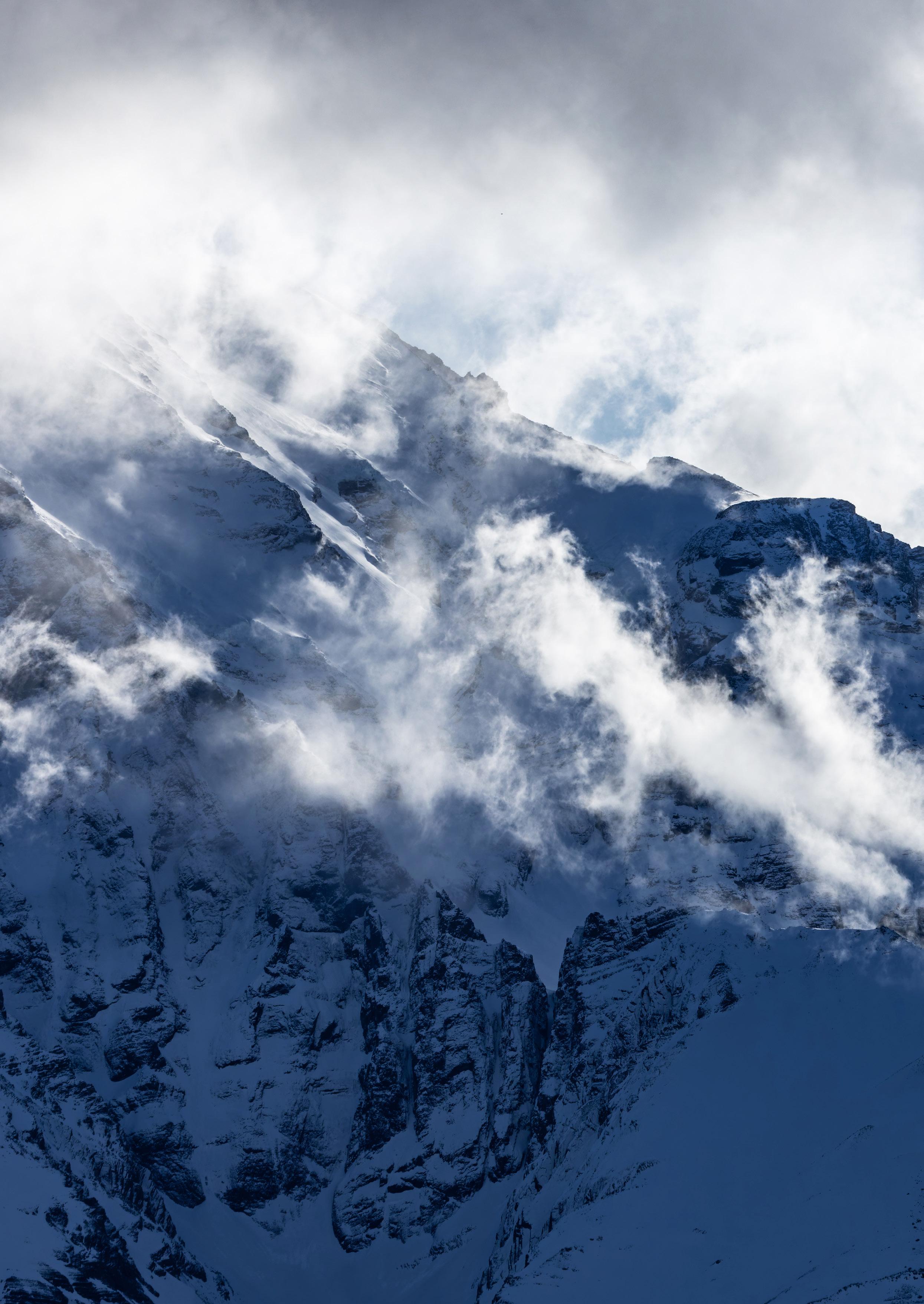

metabolise a large meal, she looked normal size today. The weather ruled out any other worthwhile images until the afternoon, when a condor flew slowy by.
LAKESIDE
The quintessential landscape image in the Torres del Paine National Park is the towers painted pink at sunrise. Several factors must come together for this to happen and then there is a scale of ‘pinkness’. First you need the sky to be clear to the east for the sun to hit the towers and you need a direct hit from the first low angle rays of sunlight for the red end of the spectrum to just make it through the earth’s atmosphere. Naturally the towers need to be free of cloud too, which is not a daily occurrence. The shot was possible on two of our seven mornings here, it was only possible on one sunrise on my visit last year. We got something today, although it looks better in camera (and certainly after processing!) than it does to
the naked eye, a bit like an aurora. When the sun clears the horizon completely the towers turn grey again and that’s game over for the day.
Puma watching today started brightly when I spotted a Puma No. #6 on the lakeshore. I had not seen one on the shore before at all, and I have been hoping for that elusive image of a Puma among the stromatolites (the living coral-like rock formations along the shore). Our very own Gin Wilde managed some good images there a week after us last year including that incredible shot with a White-tufted Grebe prey item. However, we messed up our approach and the cat evaded us. A shame but it could not be helped, it was the large male Cuevas (aptly named ‘Caves’) and if he doesn’t want to be seen, then it’s not happening. He disappeared into the rocks and we can’t follow him in there. A nice sunny morning petered out waiting for news of further sightings and we amused ourselves with some great water level
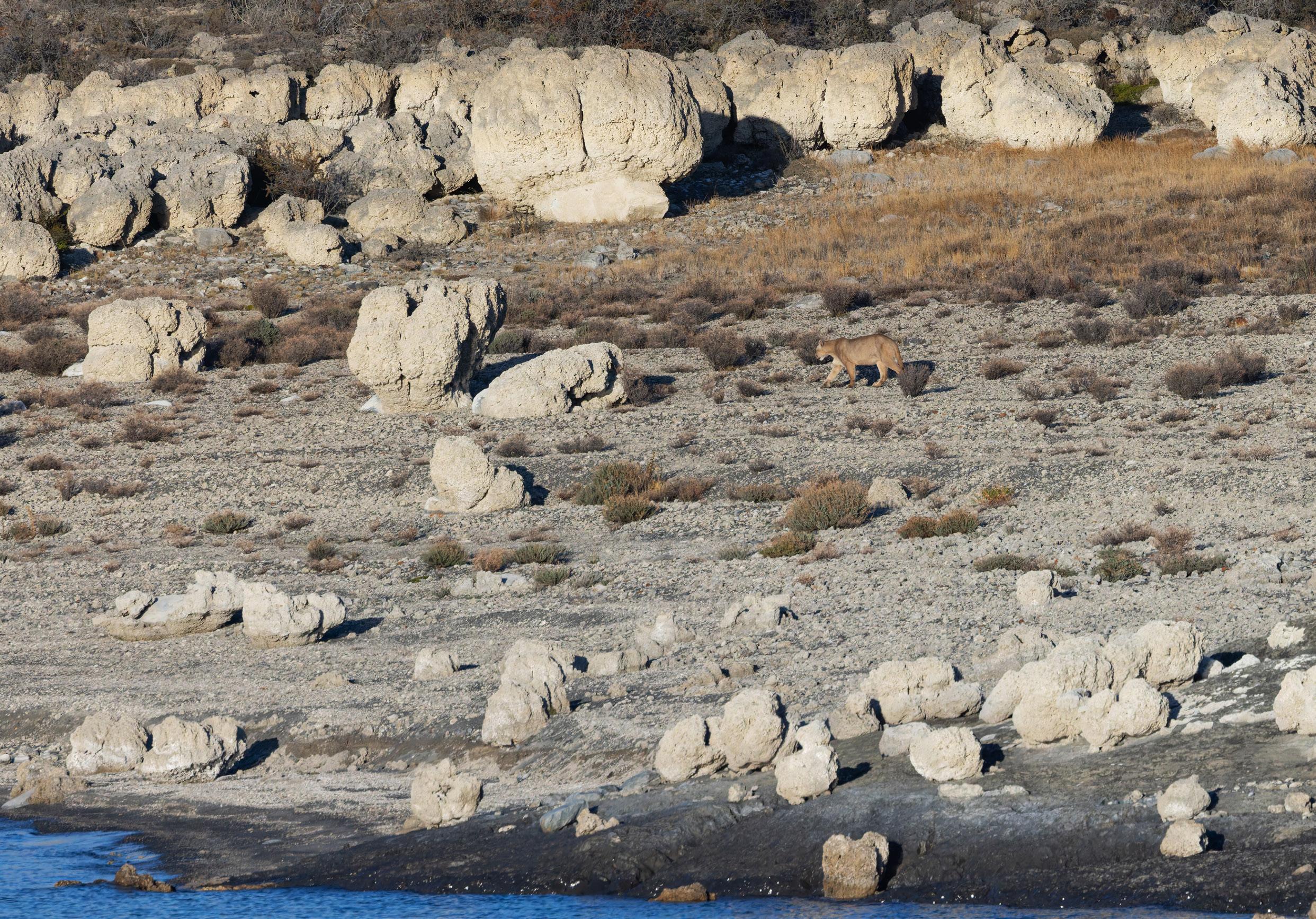
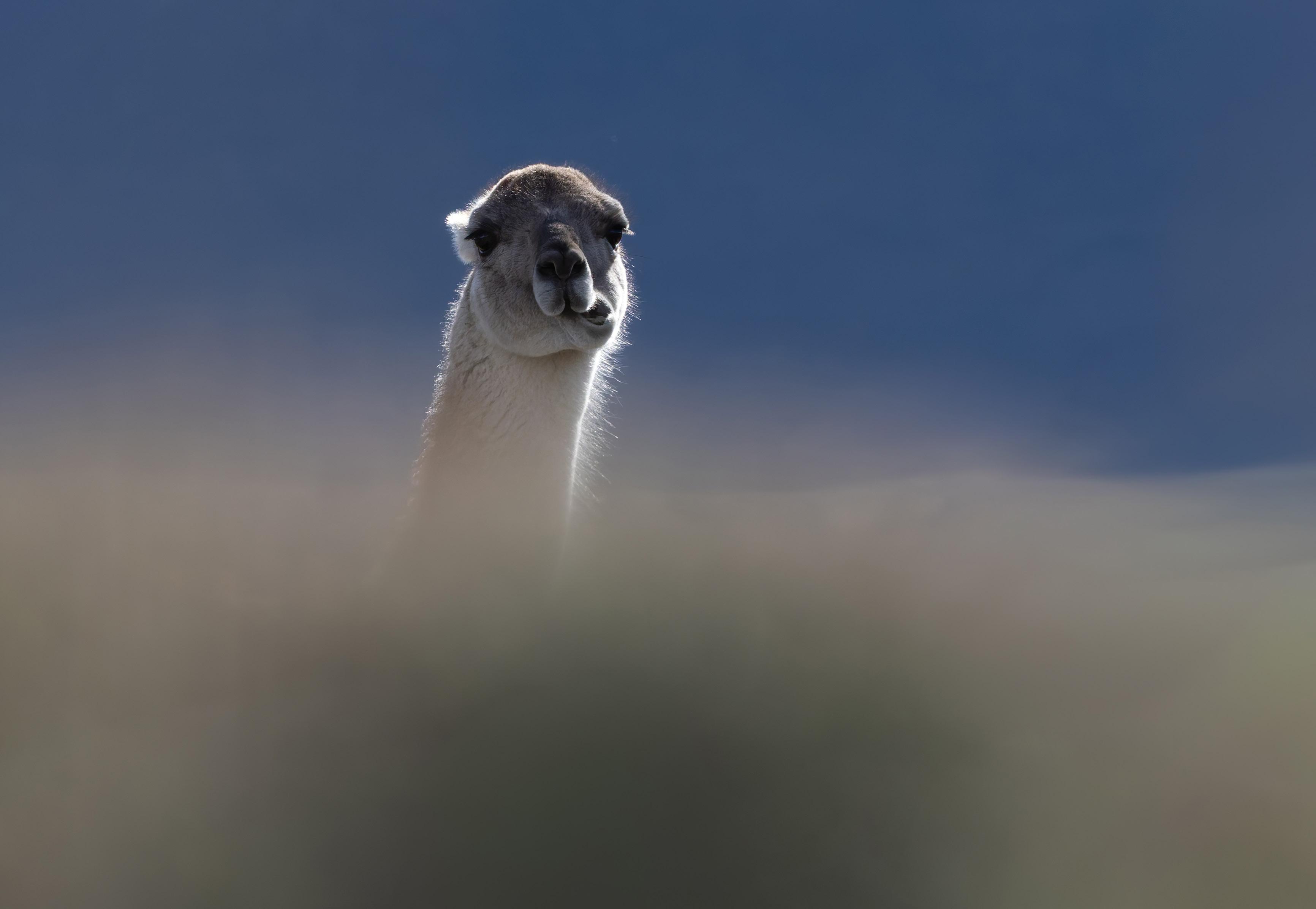
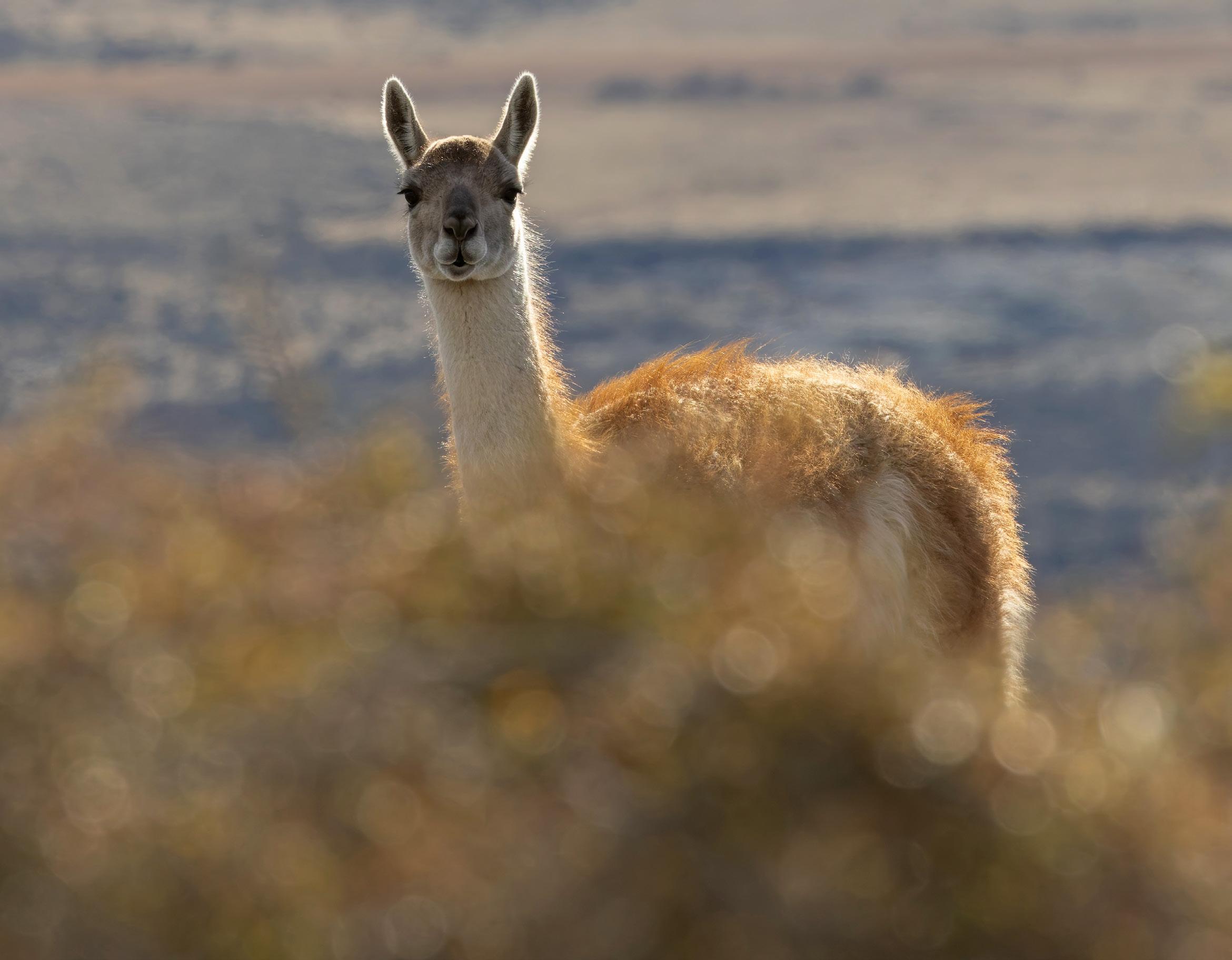
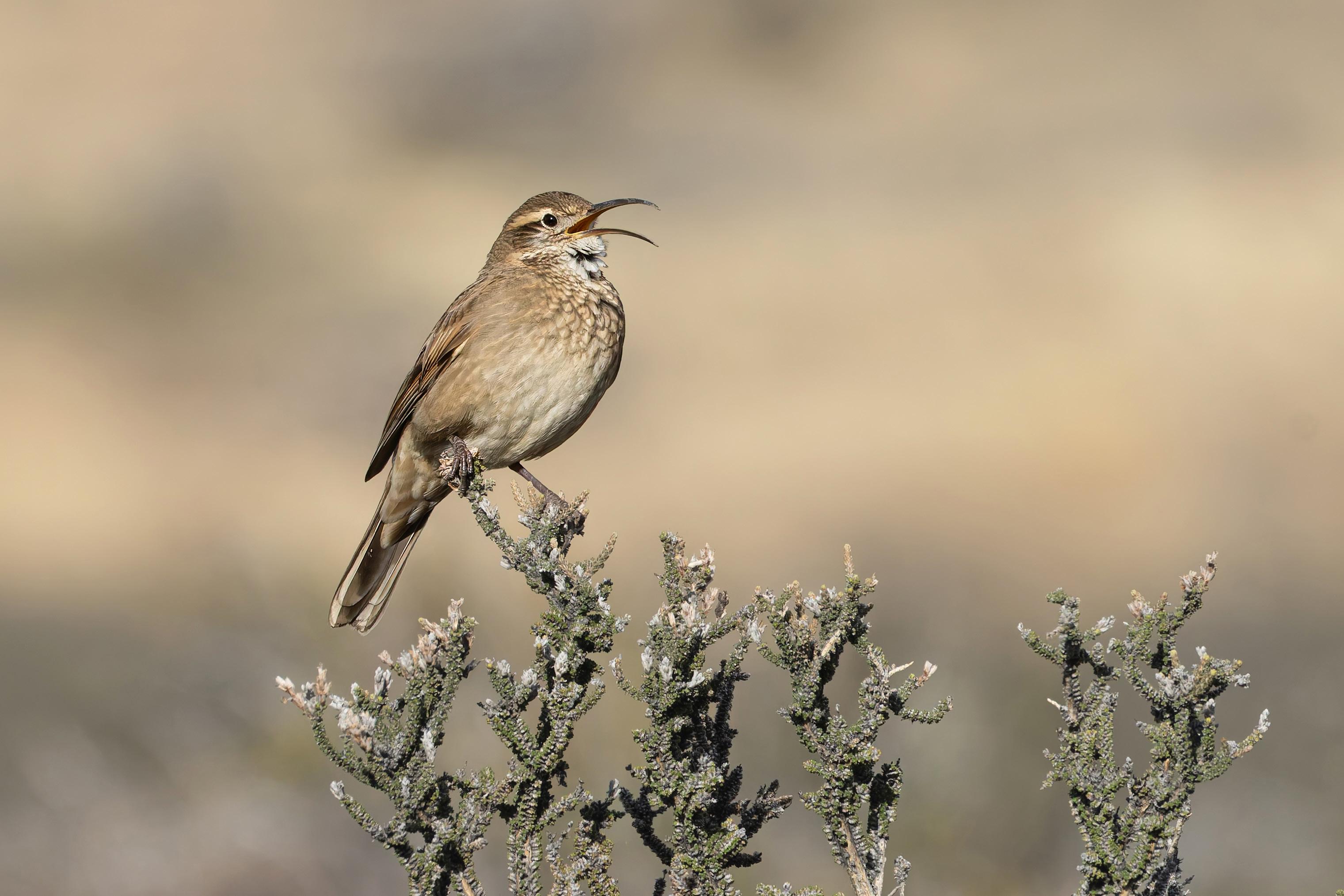
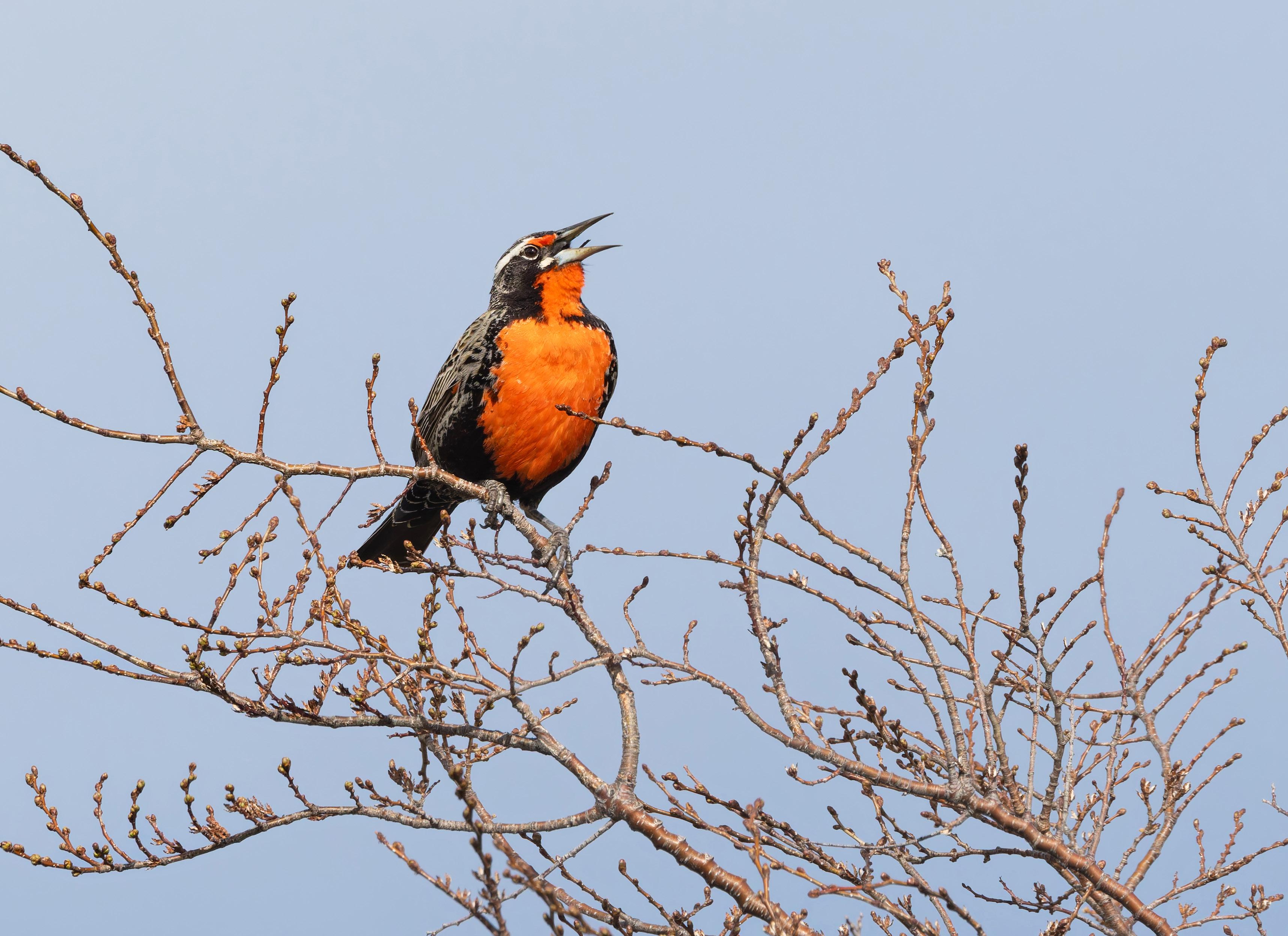

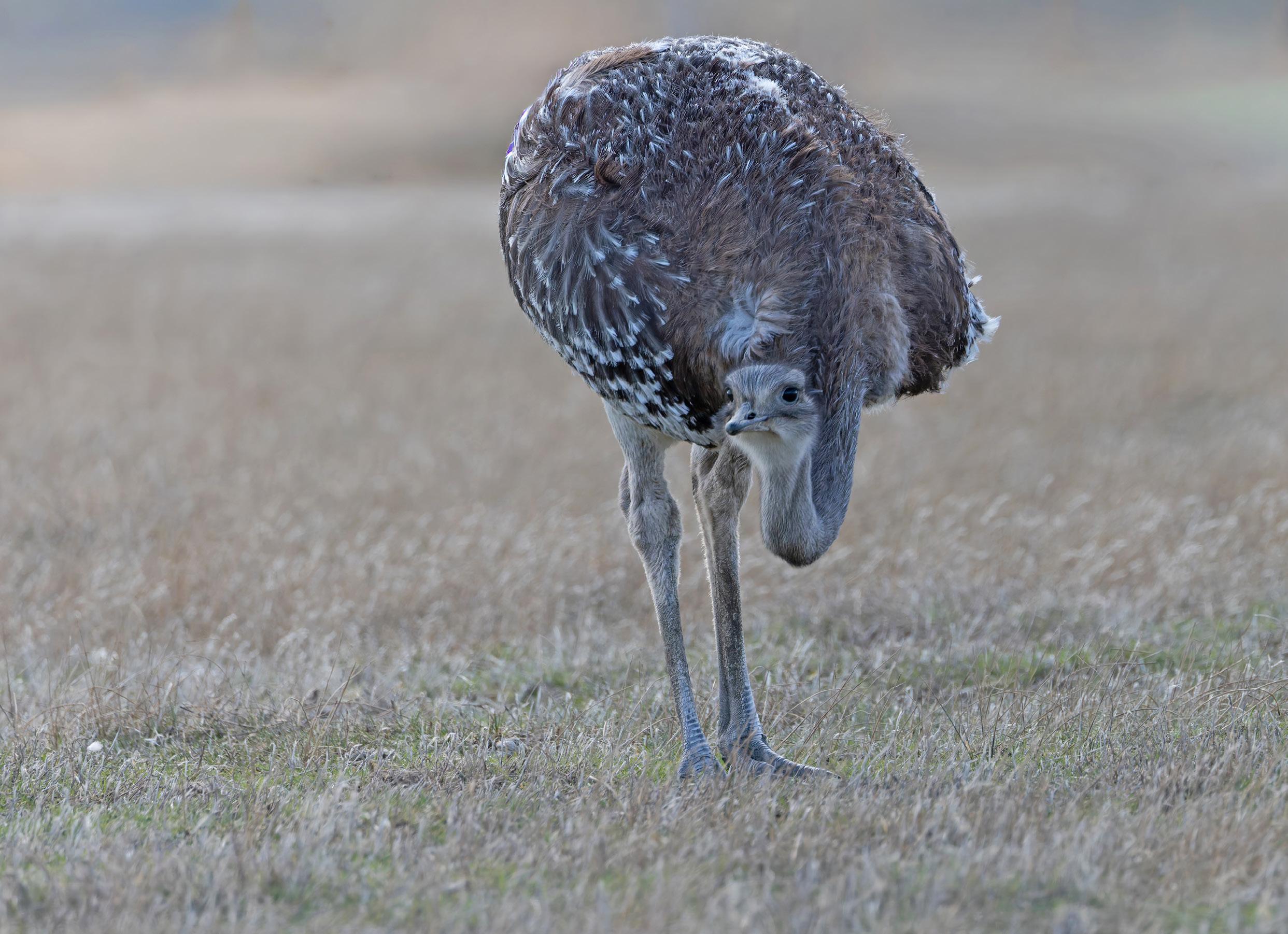
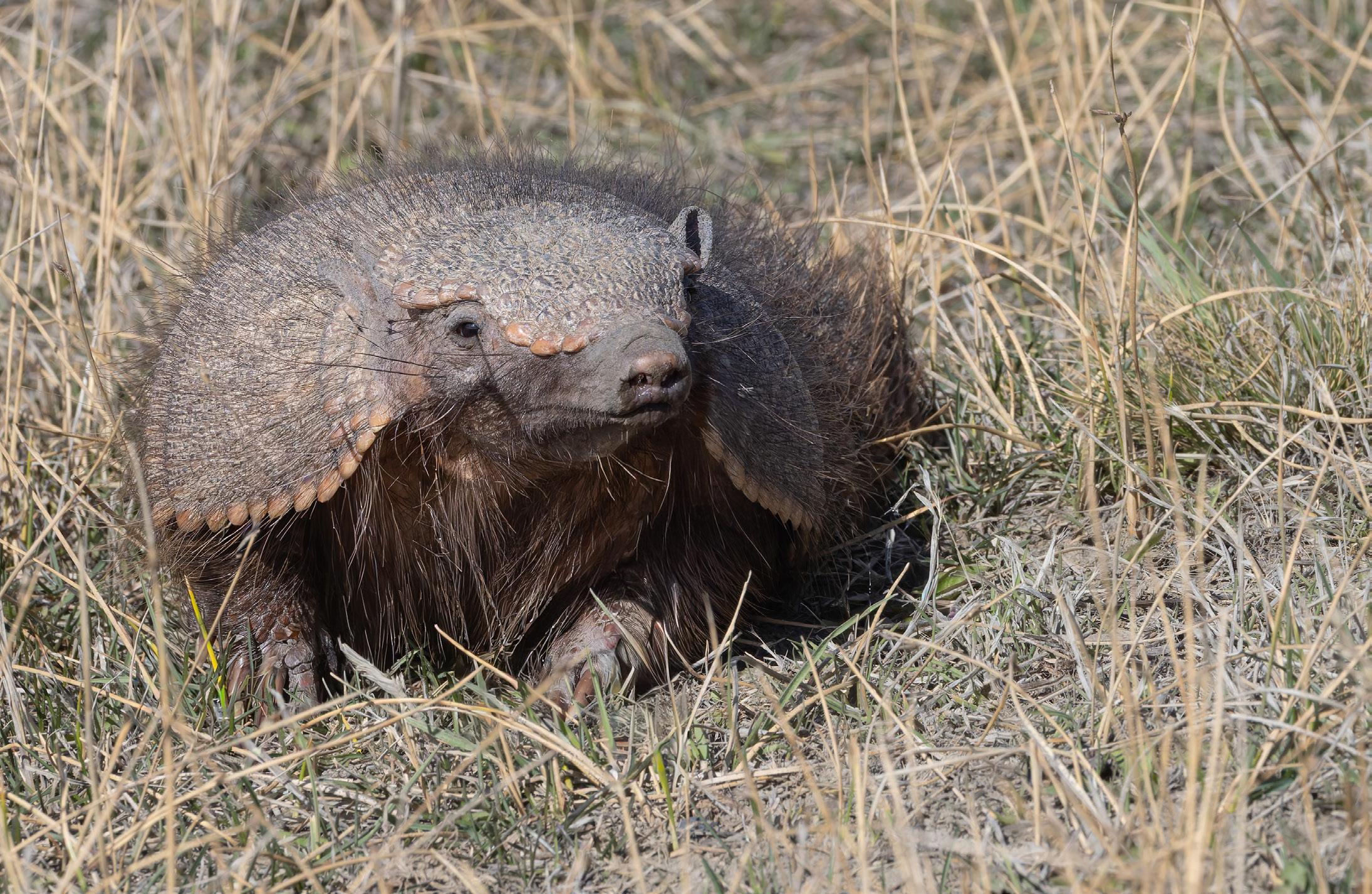
Large Hairy Armadillo. Previous pages: Scale-throated Earthcreeper, Long-tailed Meadowlark, Bronze-winged (or Spectacled) Duck & Lesser Rhea. Next page: Walking with Danya (Mike Watson)
views of a pair of Bronze-winged (or Spectacled) Ducks. Yellow-billed Pintail also obliged here, as did a pair of Magellanic Snipes and some Southern Lapwings. At lunchtime we ventured away from the ranch to the farmland to the east. Lesser Rheas abounded here as did more than a thousand Upland, and smaller numbers of Ashy-headed Geese. The highlight, however, was finding a den of Large Hairy Armadillos by the roadside. They were stupidly tame and even sniffed our boots. It was a challenge to get rid of the grasses in their faces and the fence paraphernalia in the background. What fascinating and adorable creatures they are though. Jorge was determined to find another Puma today and decided to check a small lake towards the eastern end of the ranch. He did find one! No. #7. Being watched by another group who were overdue to leave though. It was Danya, a daughter of Rupestre. She had given birth less than a week previously and here she was out and about again. After the other group left she got up and another walk with a Puma began. Danya is another cat that is very relaxed
around people, and she did not seem to mind as we followed her progress, taking images as she paused from time to time. We followed her for over a kilometre until she reached a viewpoint over the lake. She was on her way back to her cubs, so we did not follow her any further. The consensus of the local Puma guides is that they will wait until she introduces the cubs to the watchers rather than check how many she had any earlier, so we will have to wait for news.
PETAKA’S KILL: BURYING THE EVIDENCE
As we reached the east shore of Lake Sarmiento on a frosty morning, it was clear that another pink towers sunrise was on. This time, we positioned ourselves to the north of Laguna Amarga for a grandstand view of the towers rather than the more distant wider vista from the mirador at the eastern end of Sarmiento. We were just settling in and adjusting camera settings when the radio crackled into life again… ‘contacto’. Jorge our Puma tracking grandmaster had found Petaka, No. #8, with a kill not far away below us in the valley. Pu-
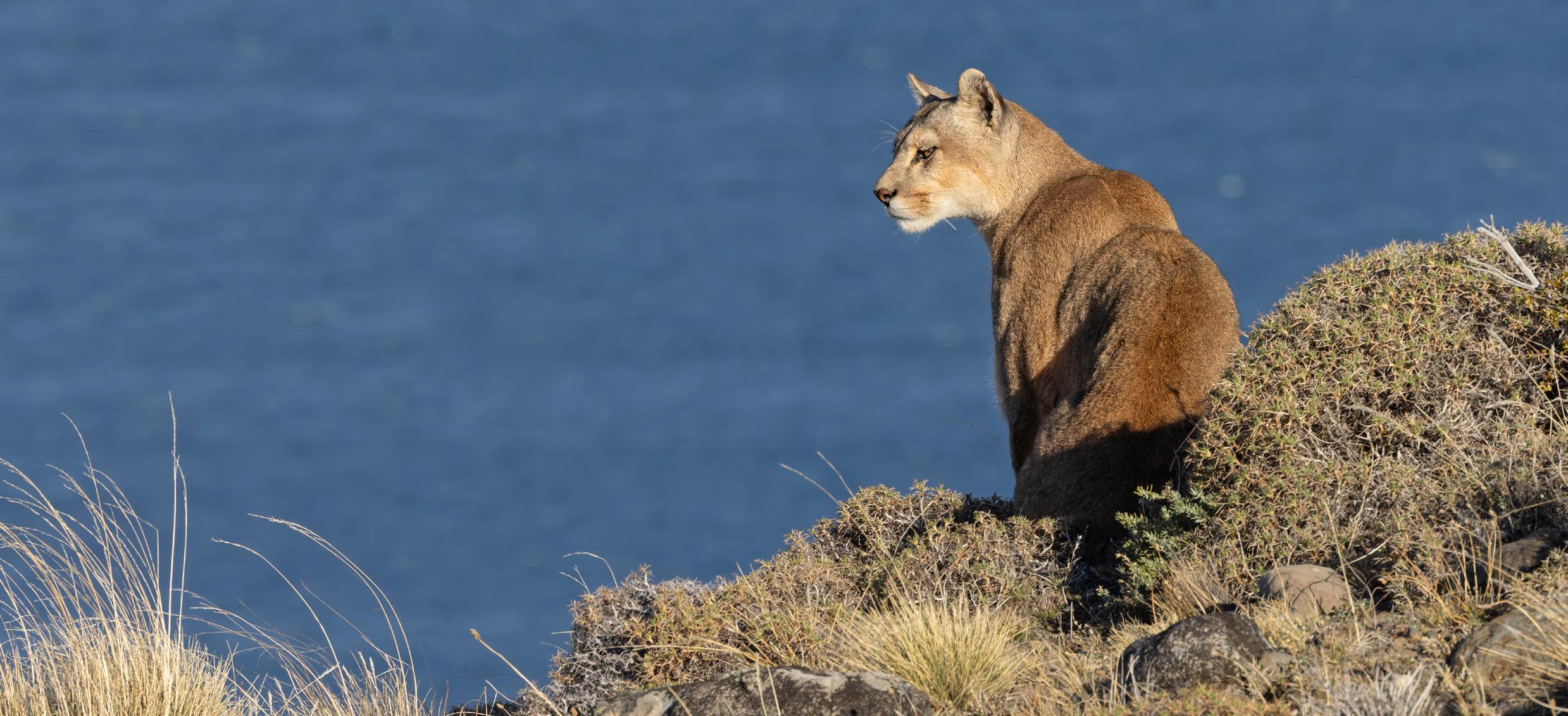
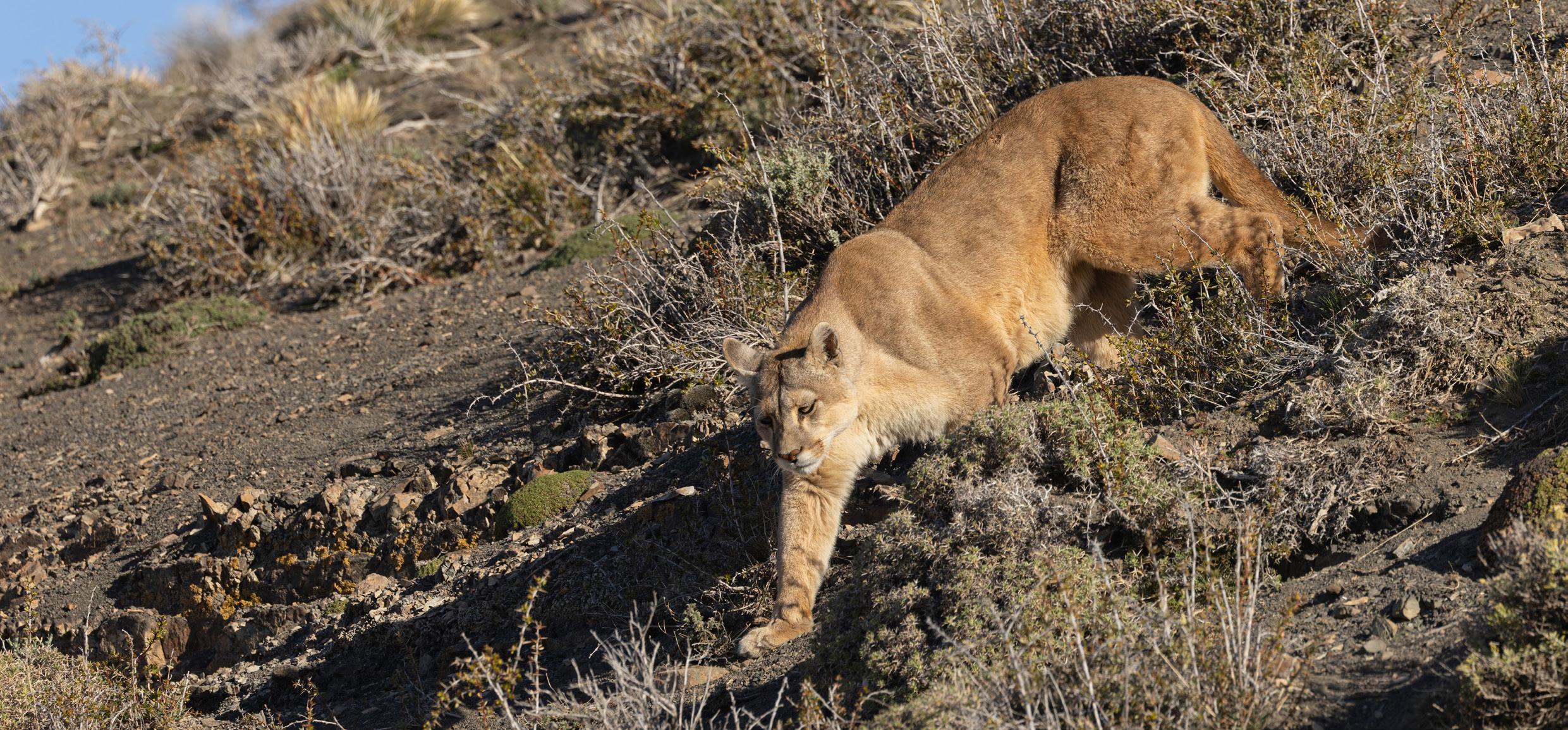
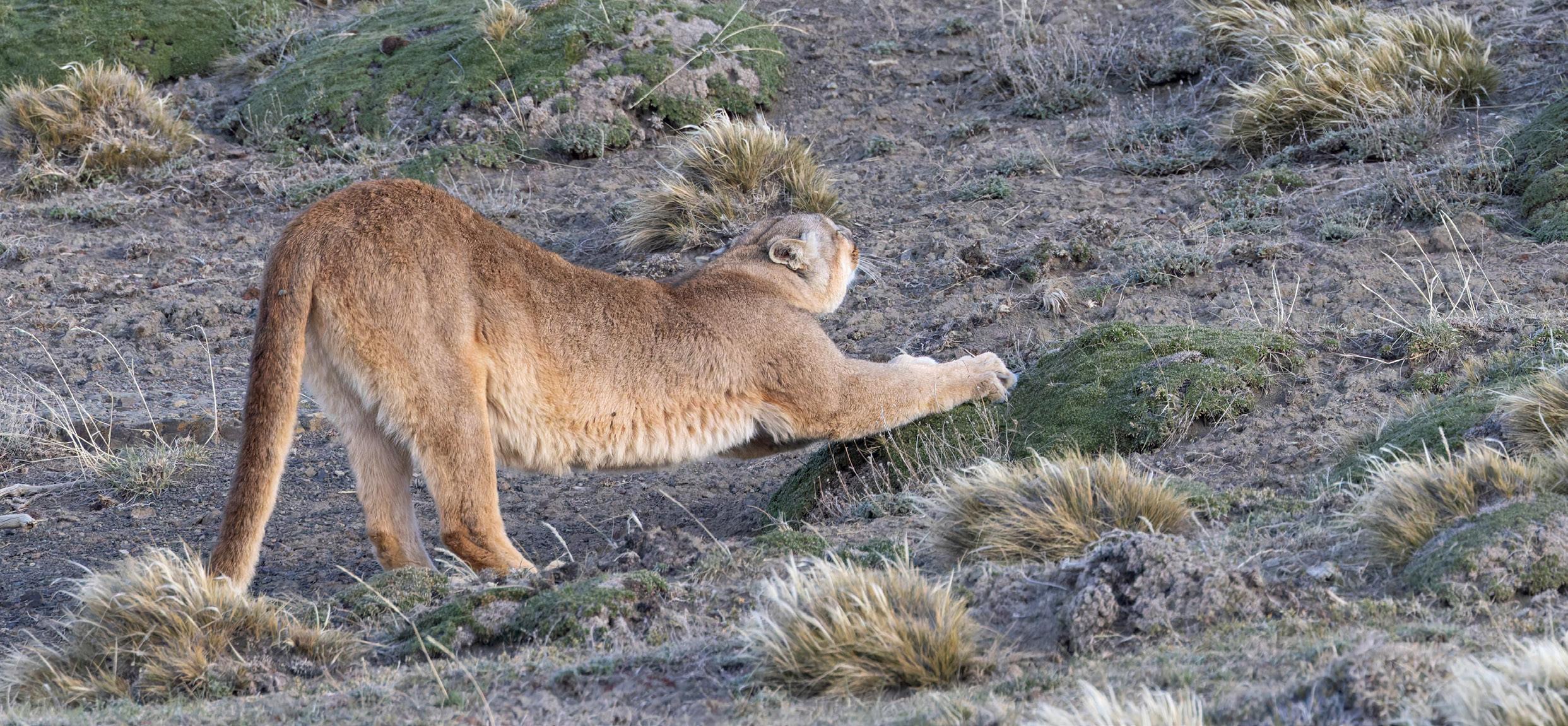
mas always take priority over landscapes on our tours, so off we went. Petaka had been feeding and was now resting but there was an active pair of Crested Caracaras around so, it was not long before she returned to her Guanaco carcass and piled even more fragments of the thorny Guanaco Bush on it. This made for some interesting stills and video clips in nice light from pre-dawn frosty blue to golden light. However, a frost also means heat haze by mid-morning and poor light for the rest of the day. We waited nearby but she did not make another move today. Instead, we were entertained by a tame South American Gray Fox, which was running around eating the large black beetles, of which there had been a mass emergence, Chilean Stag Beetles. Petaka is a beautiful cat, even if she is knocking on a bit now, at about eight years old and has lost both her upper canine teeth. She can obviously still dispatch a Guanaco. Late in the afternoon some distant Guanaco braying indicated the presence of another Puma, a young cat that appeared on the ridge high above Petaka, No. #9, but it saw us and/or Petaka and made
a sharp exit over the brow of the hill. So ended another day of hours spent with a Puma and some good photographic potential. Wonderful stuff!
FROST AT DAWN
While we had spent the day watching Petaka yesterday, Rupestre had been found with another kill in the northwest section of the Estancia to the delight of other Puma watchers. We were allocated to the northwest section today, so we headed off to check it out. En route to the scene we got a call from Jorge that there were in fact four Pumas in that vicinity, so our pace quickened considerably. By the time we arrived two of them had already wandered out of sight, but Rupestre was still there, No. #10, eating at the carcass and, just as we approached, Escarcha, No. #11, was also making her way, very carefully towards the kill. Not only that but she was backlit in the frost-covered grass that she is named after. Wow! To our amazement Rupestre pulled a face but simply accepted her at the feast and they both tucked into what was left of the un-
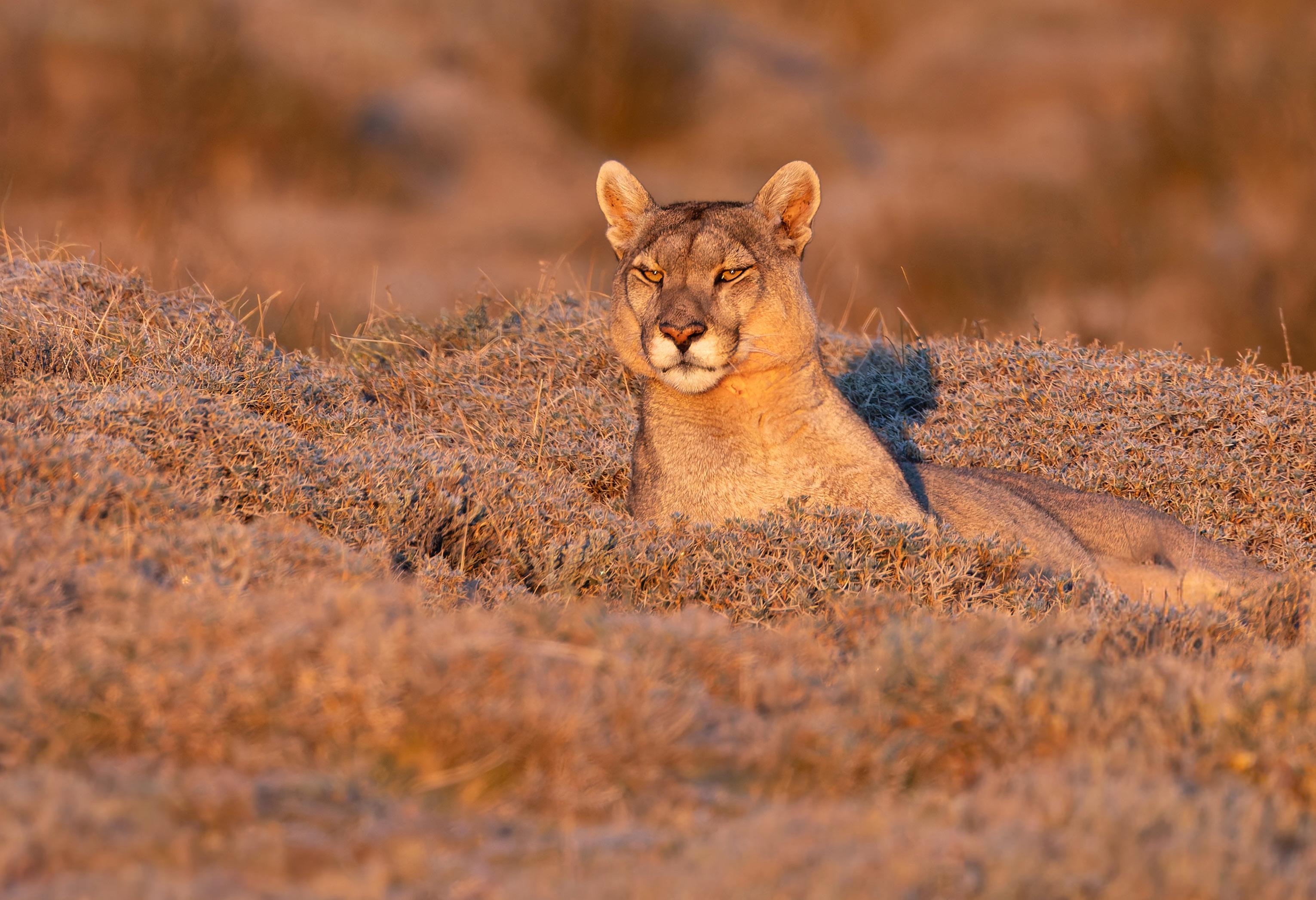
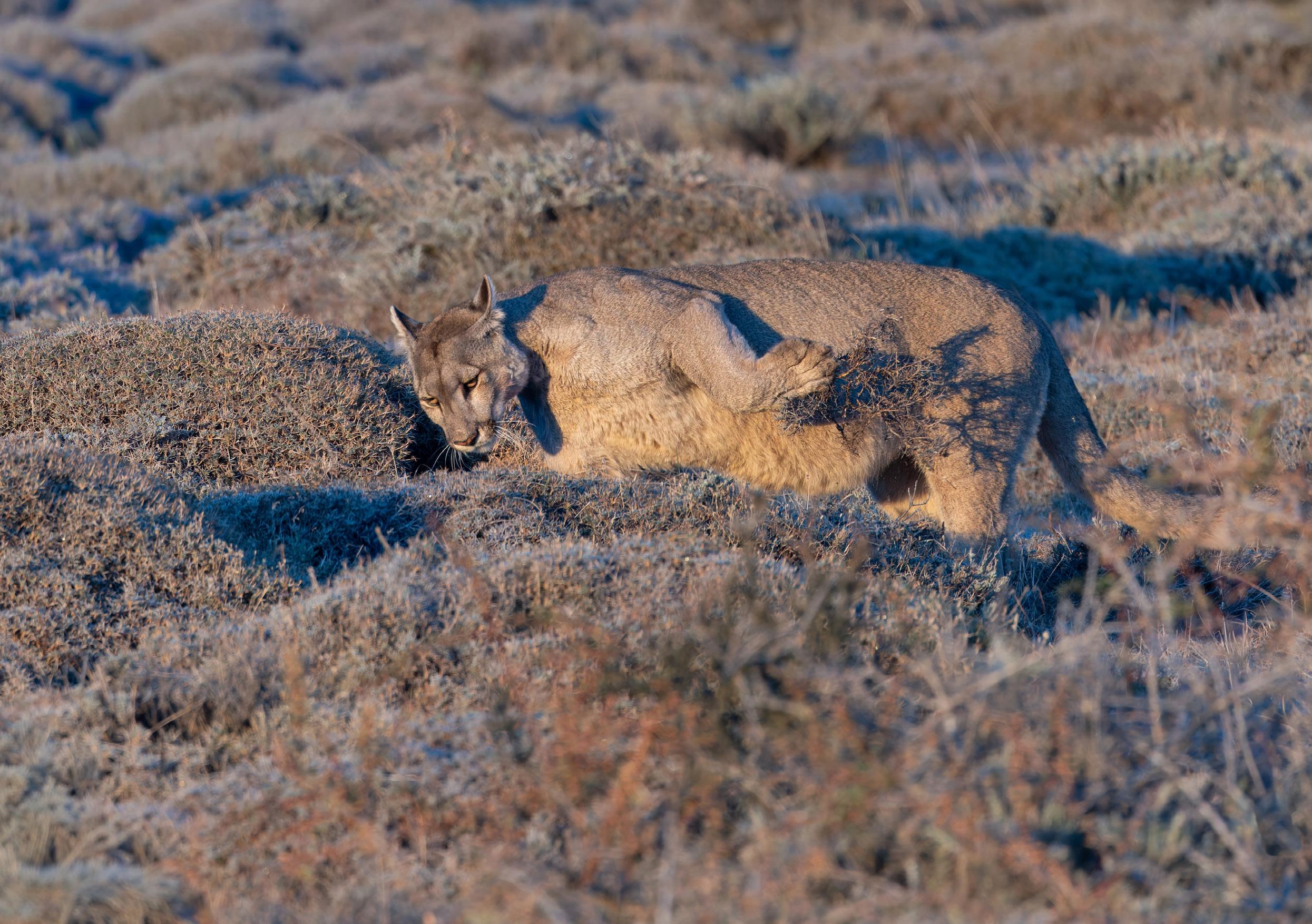

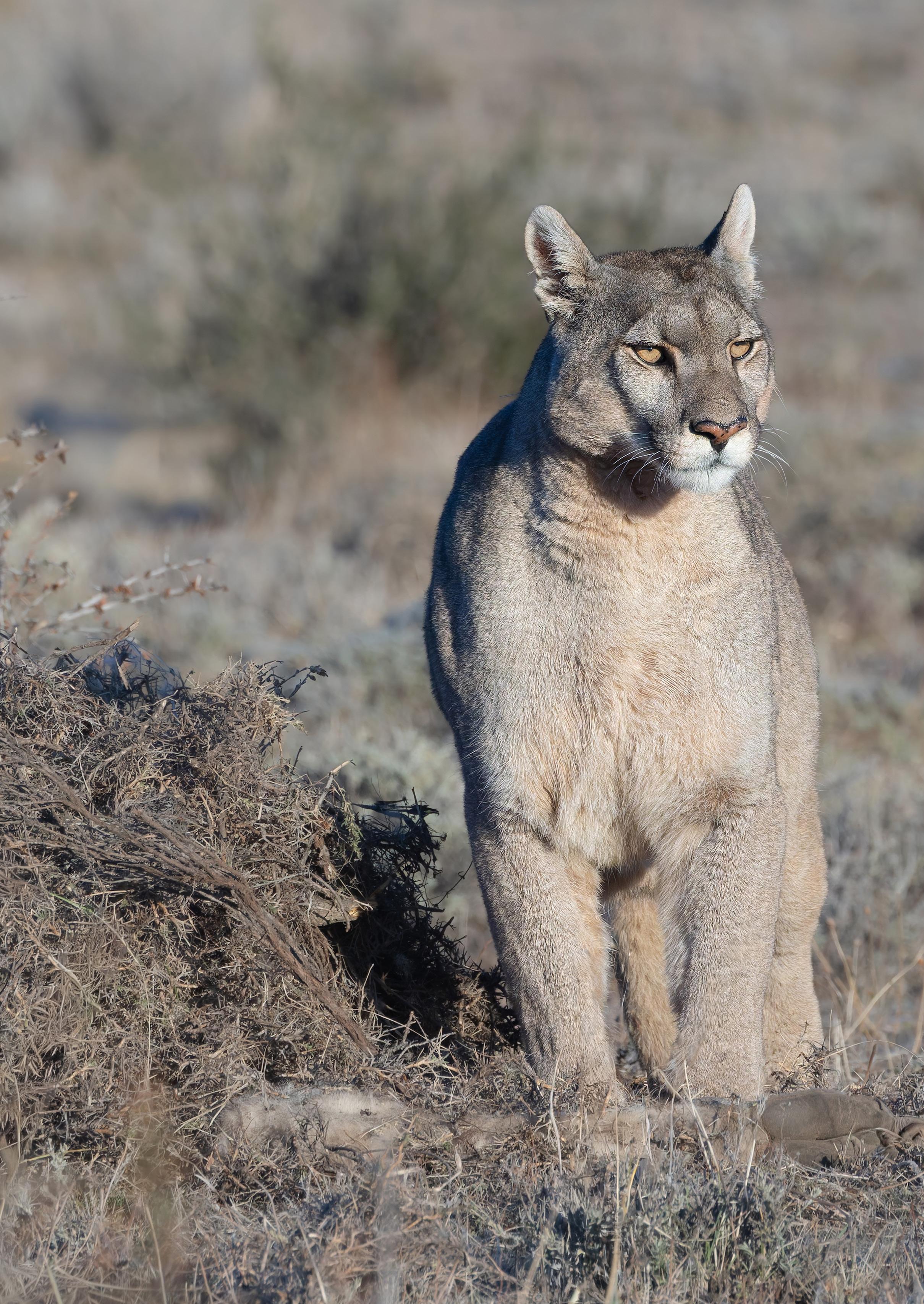
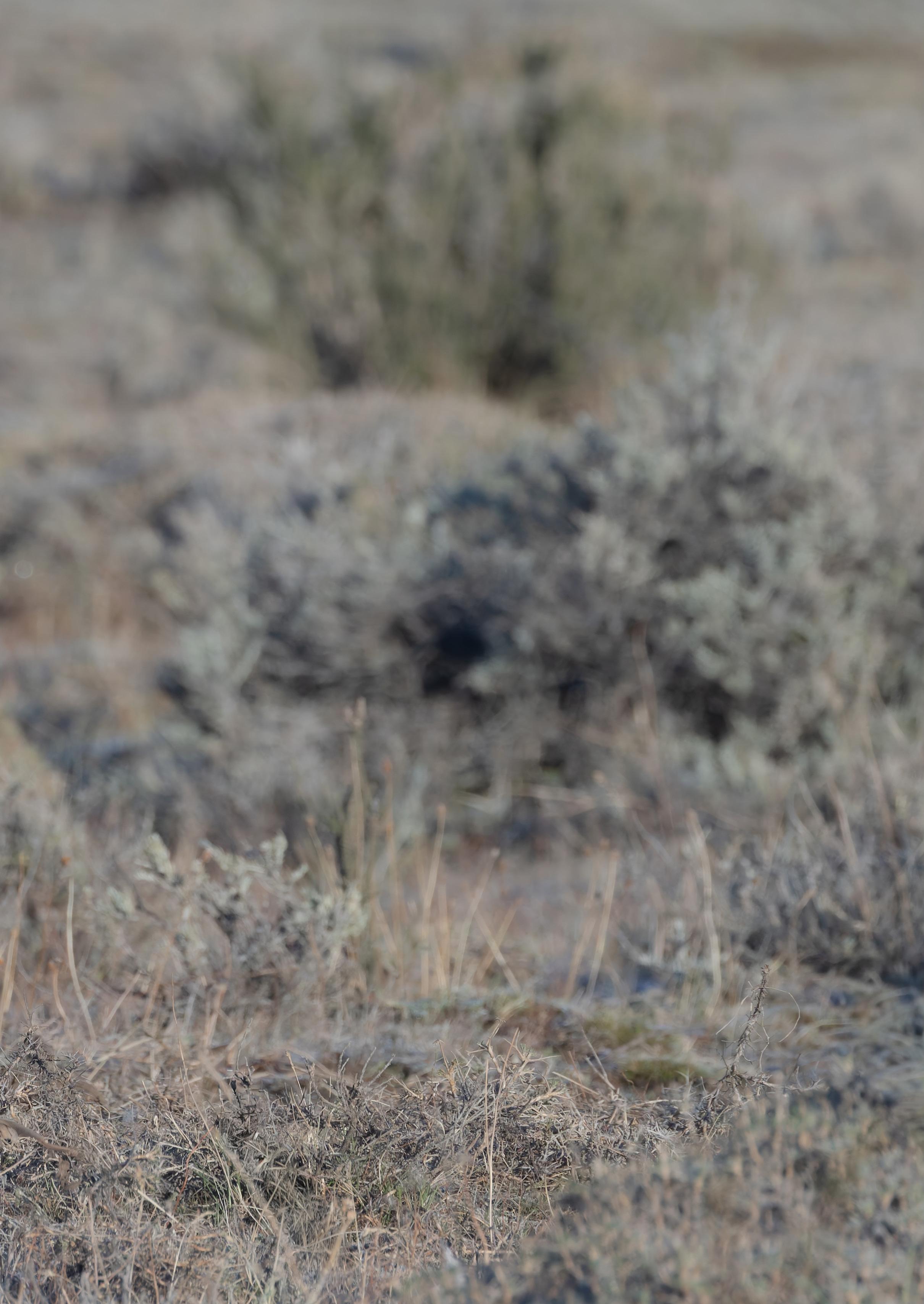
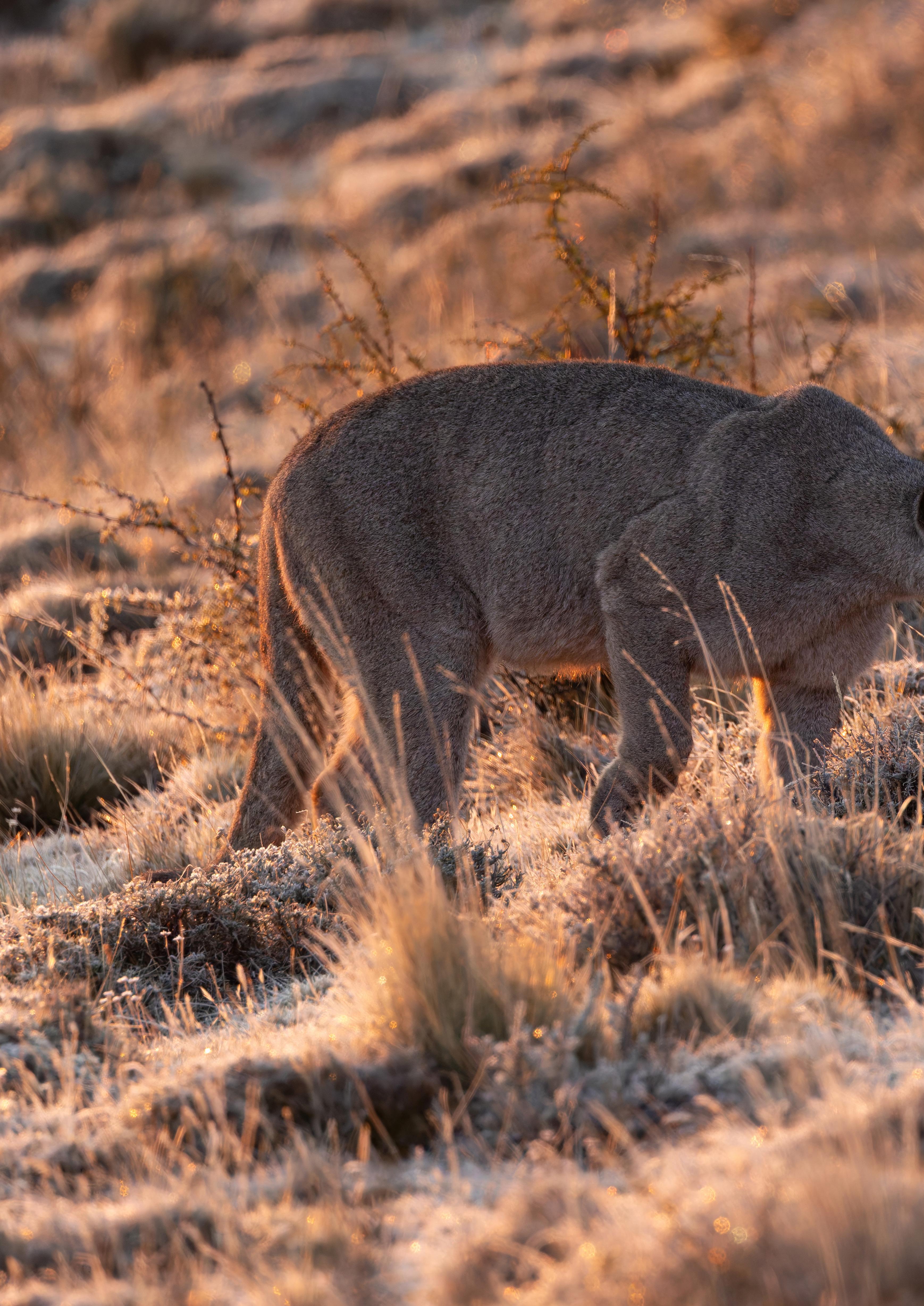
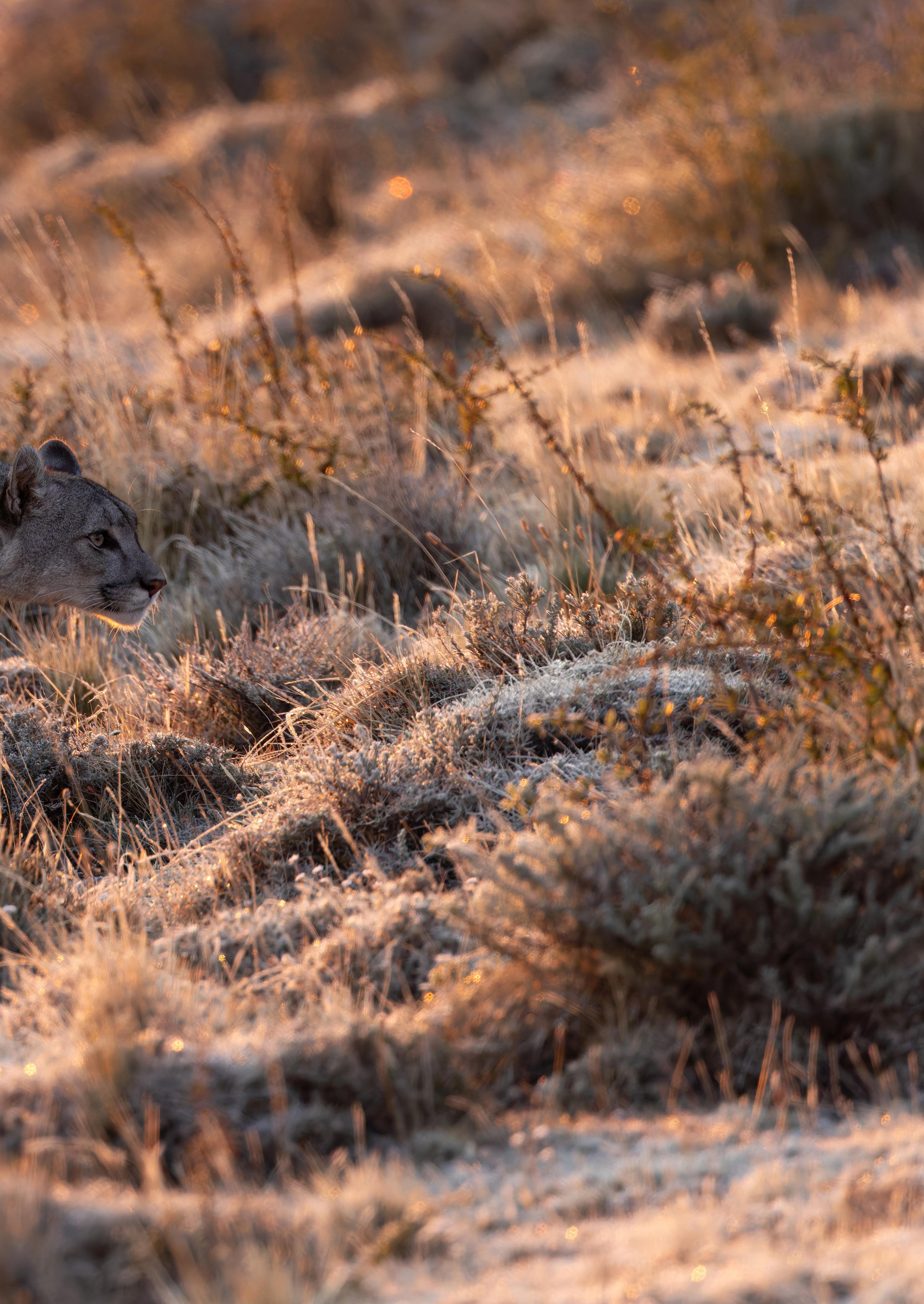

fortunate Guanaco victim. The most amazing thing was that they are not related and come from opposite sides of the Rupestre/Petaka dynasties. Evidence that unrelated female Pumas do co-operate, a joy to behold. The eating images were not special, owing to the lay of the land, it was difficult to line them up with the snowy mountain peaks in the background and eventually a very full Rupestre walked a short way from the feast to start digesting her meal. Escarcha ate some more but before too long she had enough and set off on what would be the highlight of the tour for most. She walked straight at us. When she decides to go in a certain direction, she makes no effort to give onlookers a wide berth. I was on the end of the line, and this is second time she has made a beeline for me. Nothing personal just she cannot be bothered to deviate much from her chosen path. Some frame-filling head-on images were possible if you were quick enough. So, we set off to follow her again. As usual, when
she walked, we walked and when she stopped, so did we. Mauri did a great job of anticipating her route and we had another close walk past, oh Escarcha that’s the third time you’ve done this to me! She is the best-looking cat on the estancia in my opinion and in less harsh light the frosty-grey colour of her coat stands out. She is also absolutely in her prime, with no scars or blemishes. She gets her looks from her mum Petaka! Definitely ‘one for the wall’ potential from this series of low angle light/ close and head-on views of her against a nice background of the Mata Negra. We trailed her for over a kilometre as she descended towards the main road, but she stopped short and laid down in a clump of vegetation, where we left her to rest. This encounter marked the end of our morning session on the ranch, and we headed off north via the Cascade del Paine for some polarized photography in the midday sunshine, where the Torrent Ducks were still present but too far for worthwhile images. What

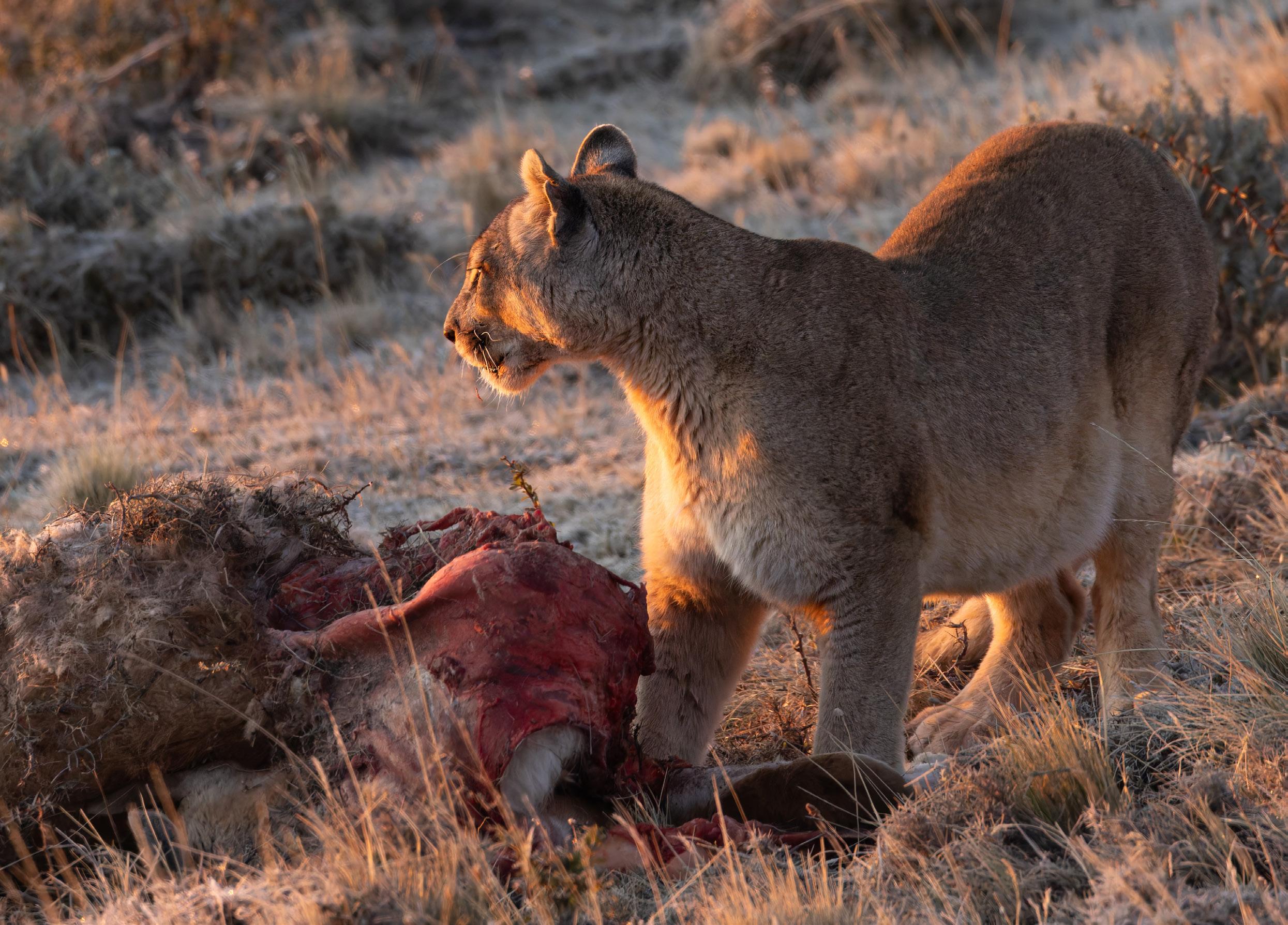
else to do before we could go back into the estancia for the afternoon/evening session? We visited a pair of Magellanic Woodpeckers, which one of Mauri’s friends had seen a couple of days previously. They were as spectacular as ever but mostly remained behind a curtain of beech branches and twigs, only appearing unobscured very briefly and not in the best light. Back on the ranch Rupestre predictably spent the afternoon asleep behind a Calafate bush and a pesky caracara, a white-throated on this occasion, was preoccupied with catching those large black Chilean Stag Beetles Chiasognathus grantii that were everywhere again instead of trying to sneak onto the carcass. Rufous-collared Sparrows were also all around us in the Mata Negra, on their way to roost somewhere nearby, I think. Another classic day of walking with pumas!
SNOW AND HAIL
This was our last full day in Puma country and proved to be another classic. We had drawn the north section again but that was OK because we could visit Petaka at her kill No. #12, and see how things were going. Almost a carbon copy of the previous morning ensued. As we approached the kill, so did another Puma, and it was another unrelated female. This is clearly a more common occurrence than I realised. This time it was Lenga, a ginger-coated ‘park cat’ of unknown ancestry, No. #13. Well, we can be pretty sure she is not related to Petaka. Petaka looks disapproving in the images but she did not budge and Lenga was quite happy to eat alongside her. Not the kind of behaviour we see in other solitary big cats like Leopards, Cheetahs and Tigers, which do not share their kills except with their offspring. Again, we could
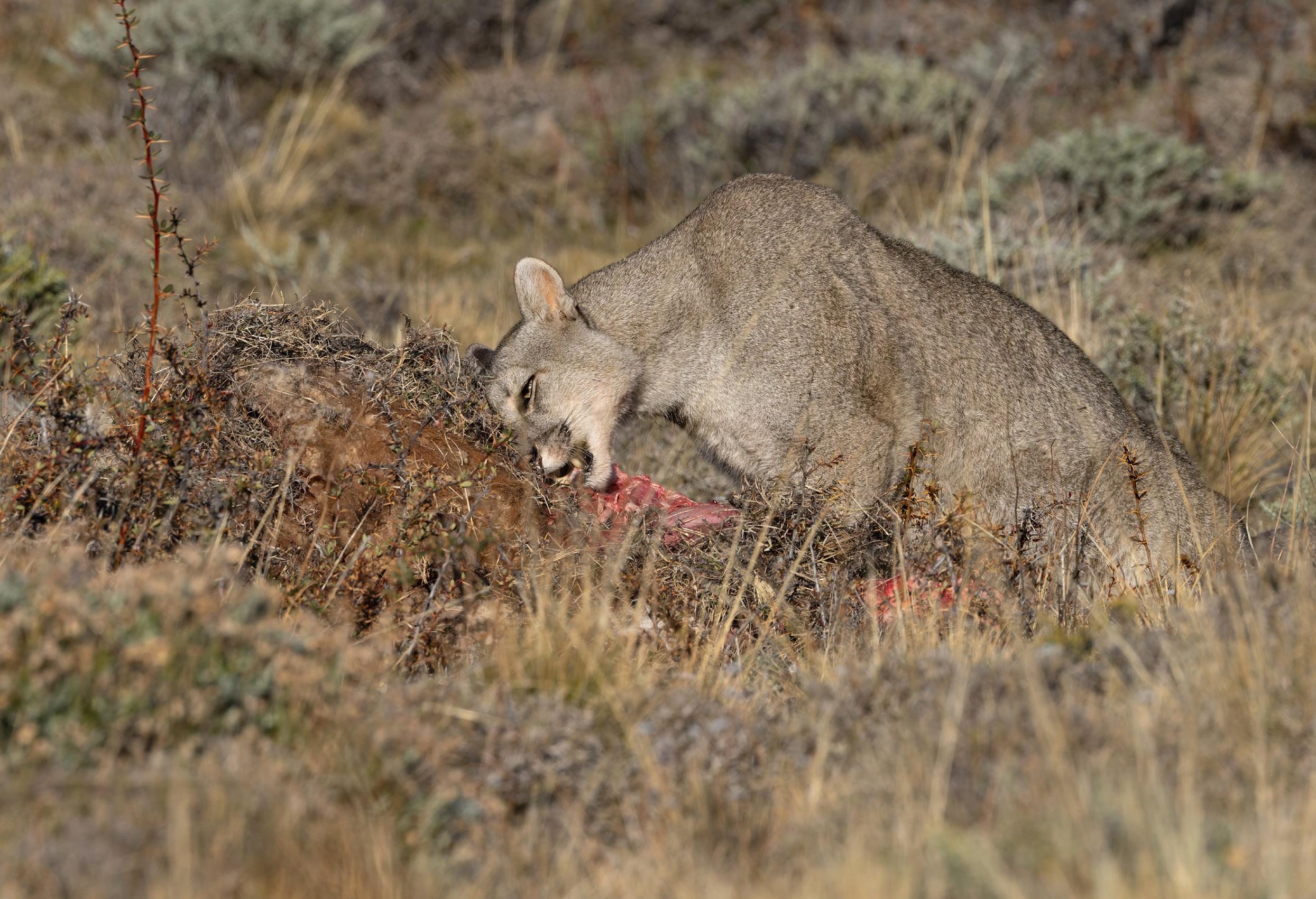
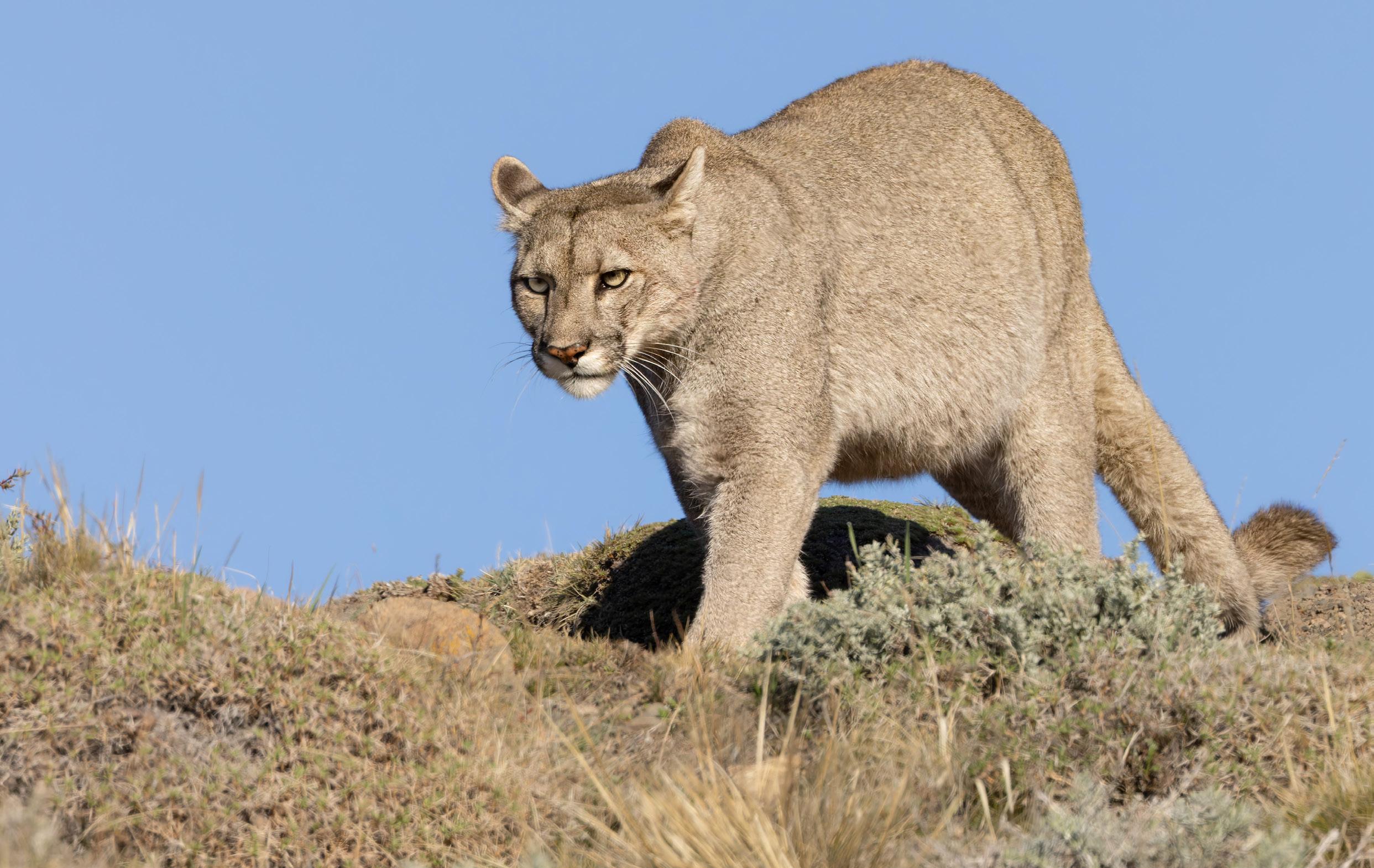
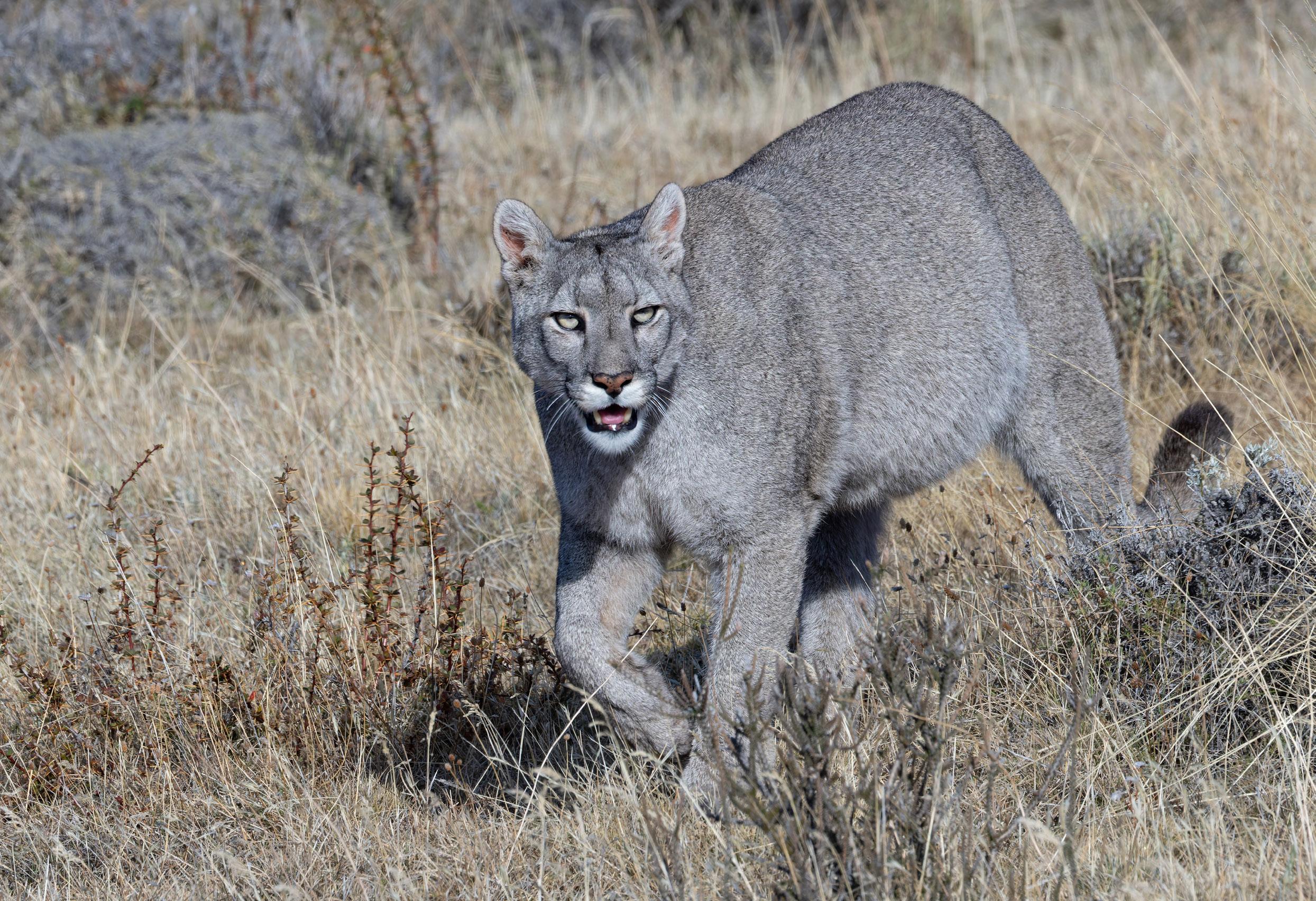

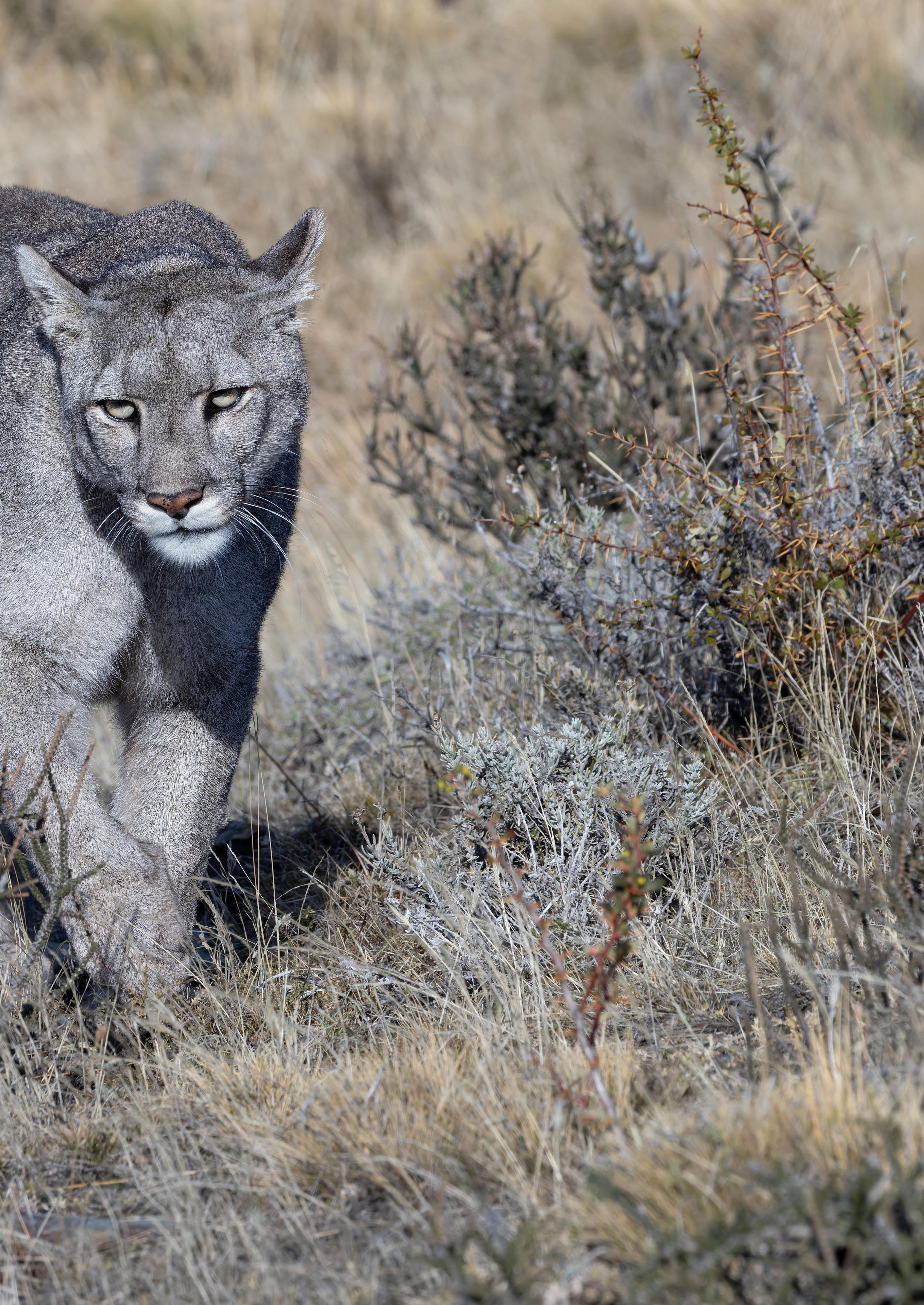


take some nice against-the-light images and after the feasting was over both cats wandered off. We chose to follow Petaka, she is always the most relaxed of all the Pumas and this walk was no exception. Most of us could keep up with her, crunching frosty Guanaco Bushes beneath our feet, as with walked slowly uphill and some good backlit images were had. She then walked onto the road and down it towards the assembled public road ‘pirates’. Folks scattered from her path, she just walks where she wants without a care. She even took a short cut between closely parked vehicles to get to her chosen patch of Mata Negra. She must know the estancia like the back of her paw, so she probably has favourite resting spots. We left her as she disappeared into the bushes to rest. We were not finished yet. As a special treat Mauri took us to see one of his study cats, Nieve (‘Snow’), No. #14. She is wearing a collar now, however, her six months old cub Granizo (‘Hail’) is not, No. #15! We were incredibly privileged to be able to pay them a visit. They were hanging out near Lake Sarmiento and even
fulfilled my long-standing wish by walking into the stromatolites! Granizo is still at the inquisitive stage and although his mum was ushering him to stay with her, he still crept over to check us out, affording some lovely views among the whiteness of the stromatolites. Beautiful! A Short-eared Owl flew up while we were here as well as a Magellanic Snipe and a couple of Buff-winged Cinclodes. Magellanic Oystercatchers entertained us at lunch but the afternoon rather petered out without another Puma sighting.
THE TOWERS AND THE HORNS
It was time to say goodbye to the Torres del Paine. Most of the day was spent driving across the national park, parallel to the Torres del Paine massif, first the towers from lovely Laguna Amarga (again no painted sunrise today), various miradors along the way, and then the Cuernos del Paine (the ‘horns’). I had not noticed what looks like the image of a lone rider on the huge rock wall on the right side of the horns before! The jagged peaks of the horns
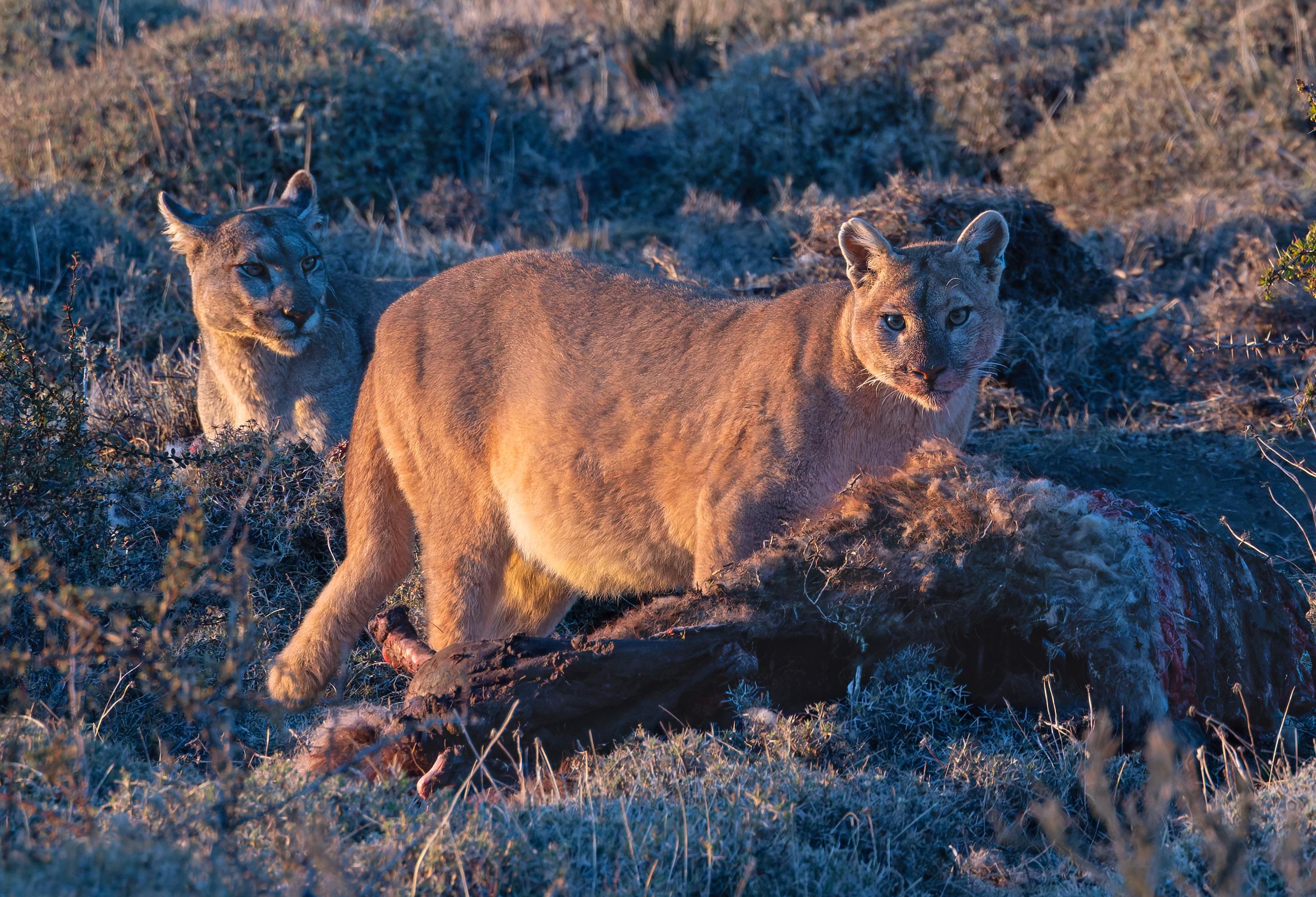
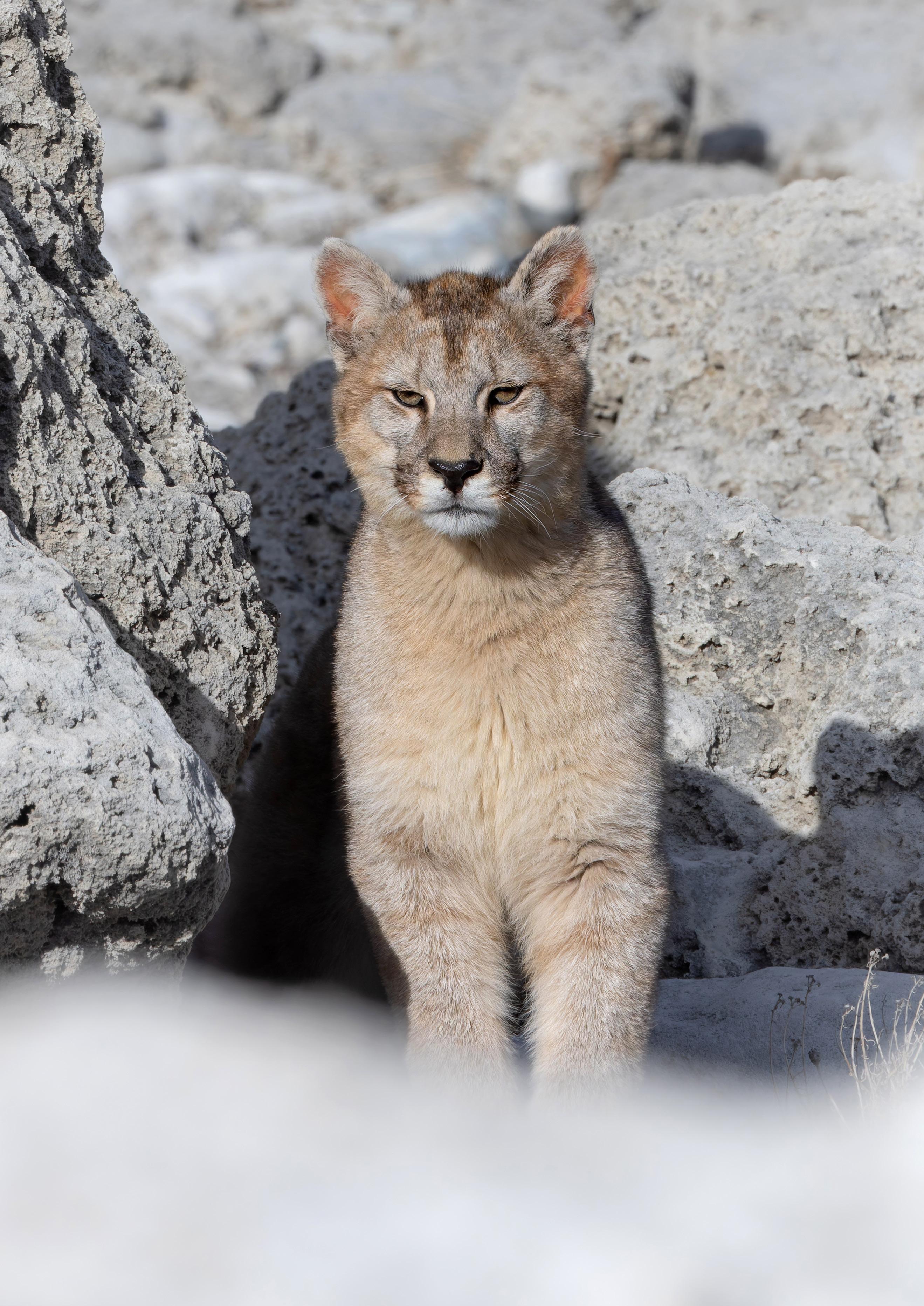
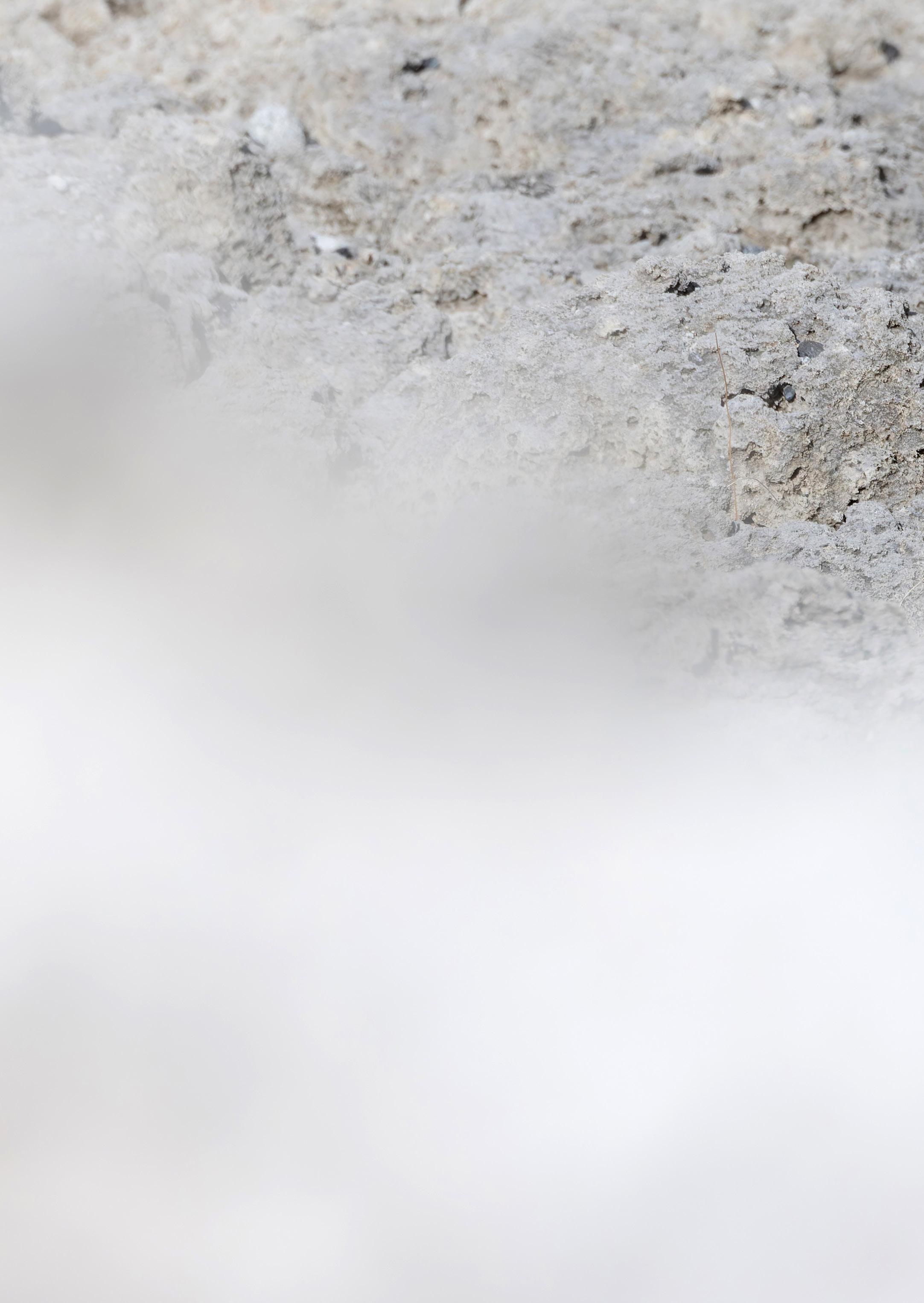
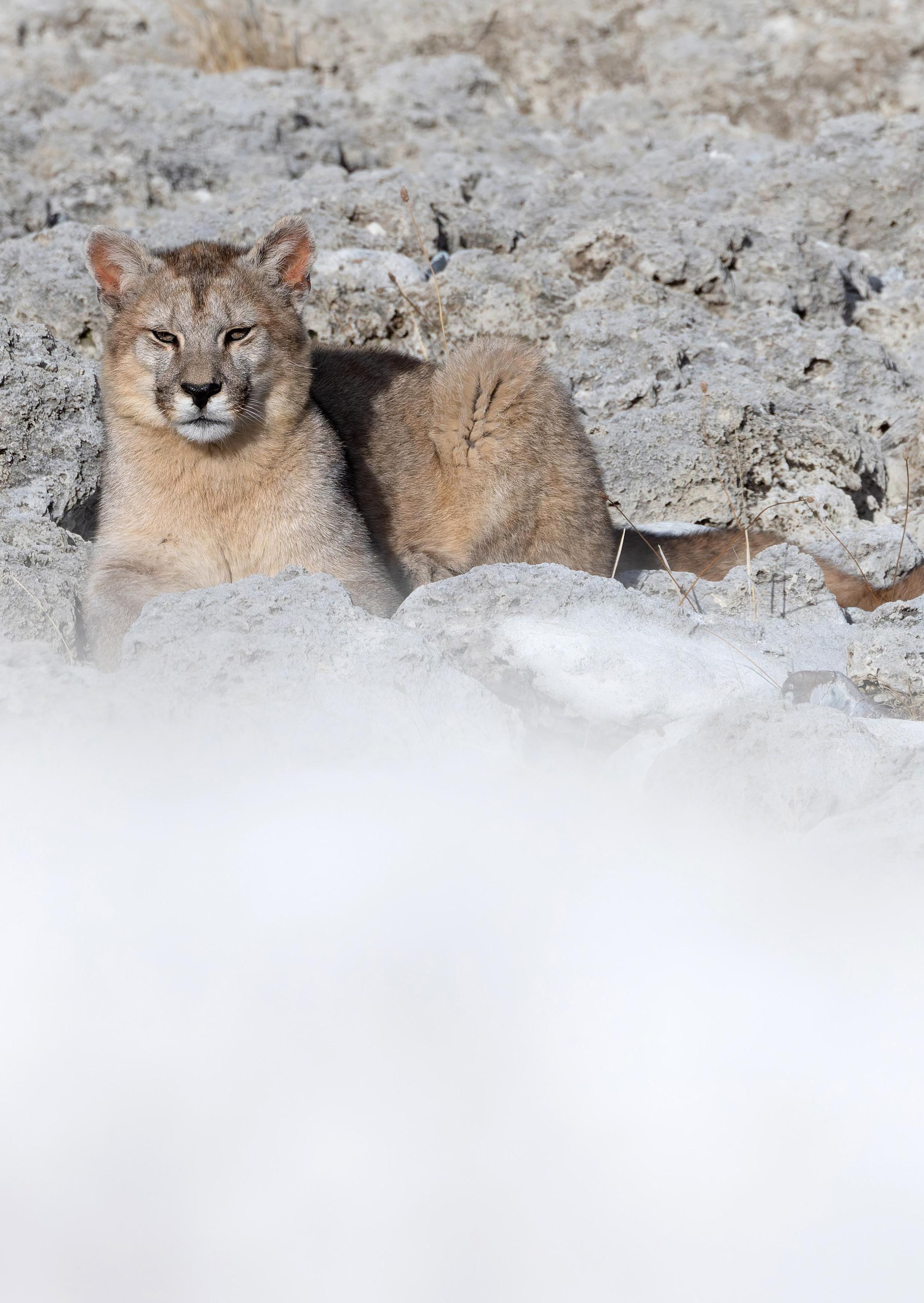
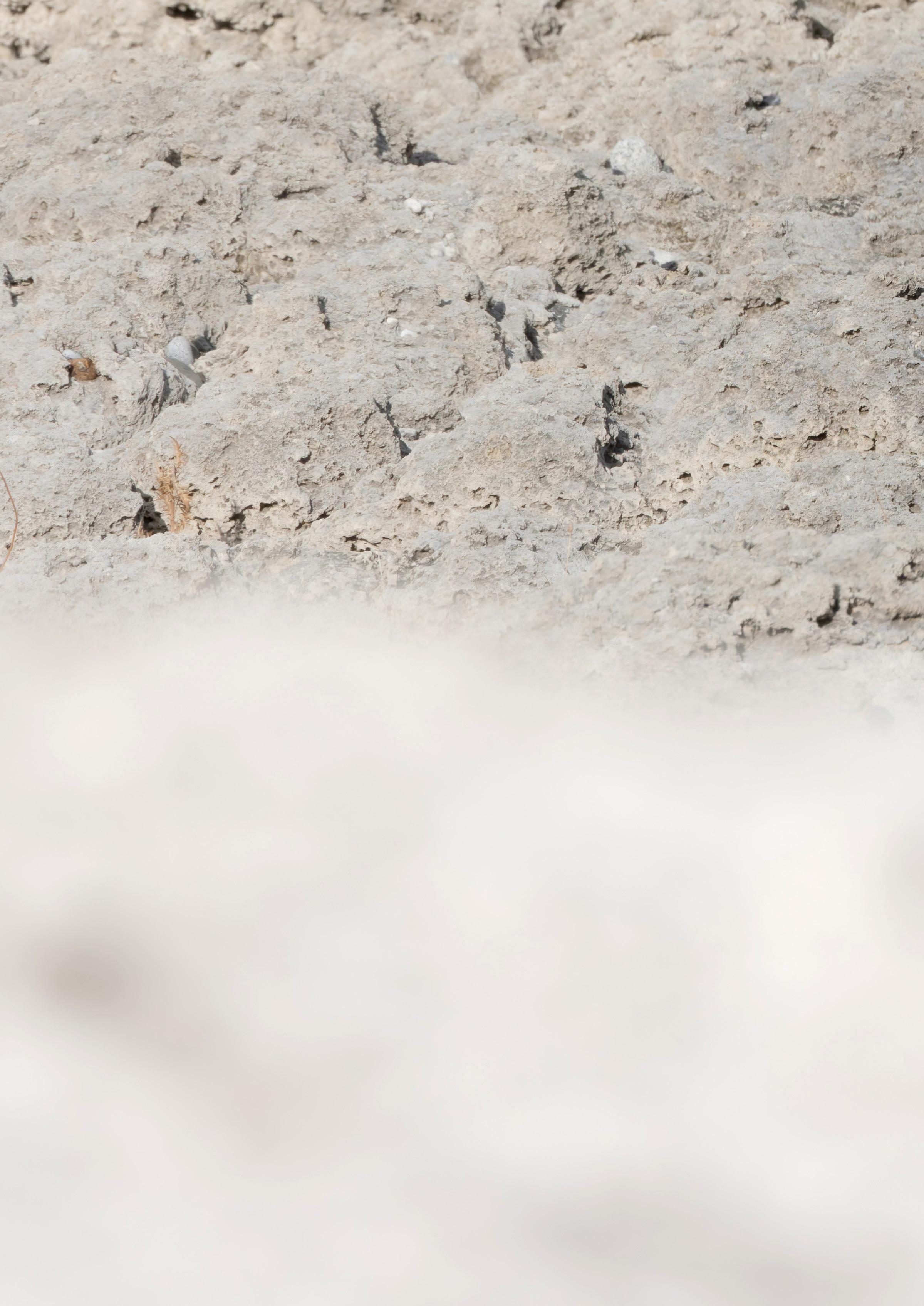


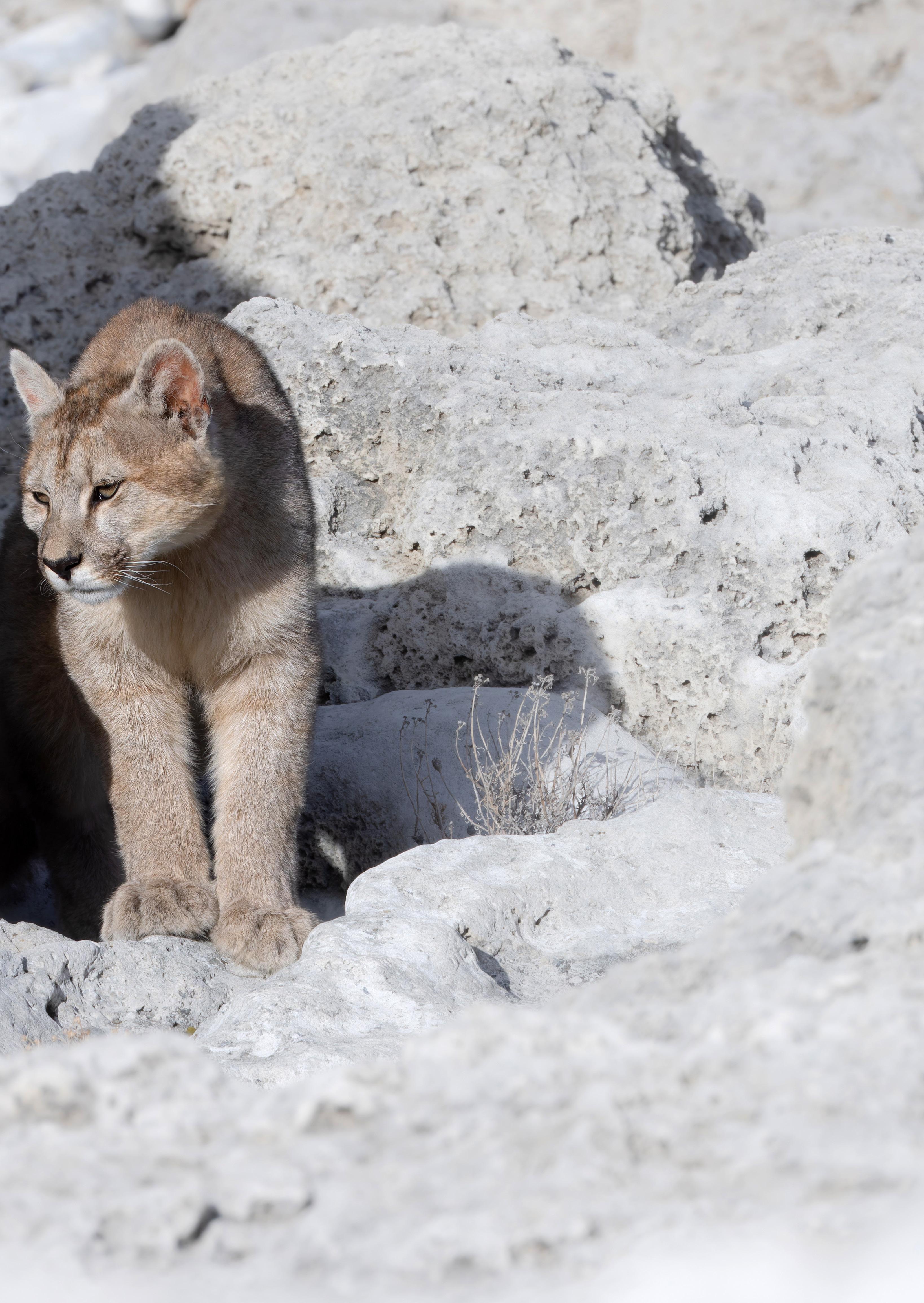
consist of Cretaceous sedimentary rocks with a Micoene granite intrusion. We could add a few reflections in the water of Lake Pehoe to our images, but the light was rather flat today, more suitable for black-and-white photography. A couple of us who ventured out to take some photos over the dead beach trees were treated to an avalanche high on the Glaciar del Francés! A drive through the charred landscape of dead beech trees followed, thanks to periodic fires mostly started by idiotic tourists, although apparently studies have shown that fires are not just a recent phenomenon! Between them were occasional intact stands of contorted Southern Beech trees, like something out of Lord of the Rings. This is not surprising as the trees are close relatives of those filmed in New Zealand in the epic based on Tolkien’s books. (Did I mention before that he went to school at Stonyhurst, within sight of the Wild Images office!) The Nothofagus genus of beech trees originated in Gondwana during the Cretaceous period, hence its presence on the now scattered fragments in Australia and New Zealand as well as the Southern Cone. We spied a few birds along the way to lunch at the lovely Lago Grey, including Chilean Flicker and Austral Parakeet but sadly the Magellanic Woodpeckers were not at home, it was fortunate we had already ticked this one off. The long drive along the ‘route to the end of the world’ was happily uneventful and we reached Punta Arenas in good time for another fabulous meal at our favourite restaurant, before it was time to say our goodbyes and go our separate ways. It is a long way home from Patagonia. Thanks to our very enthusiastic group and particularly our excellent Puma trackers Jorge and Mauricio for making this another enjoyable and successful tour! We will be back again in Patagonia next year!
Paine Grande and Cuernos del Paine. Next pages: Blackfaced Ibis, Flying Steamer Duck, Magellanic Oystercatcher, Great Grebe and Dolphin Gull. Magellanic Woodpecker, Fiireeyed Diucon and Austral Parakeet (Mike Watson)
